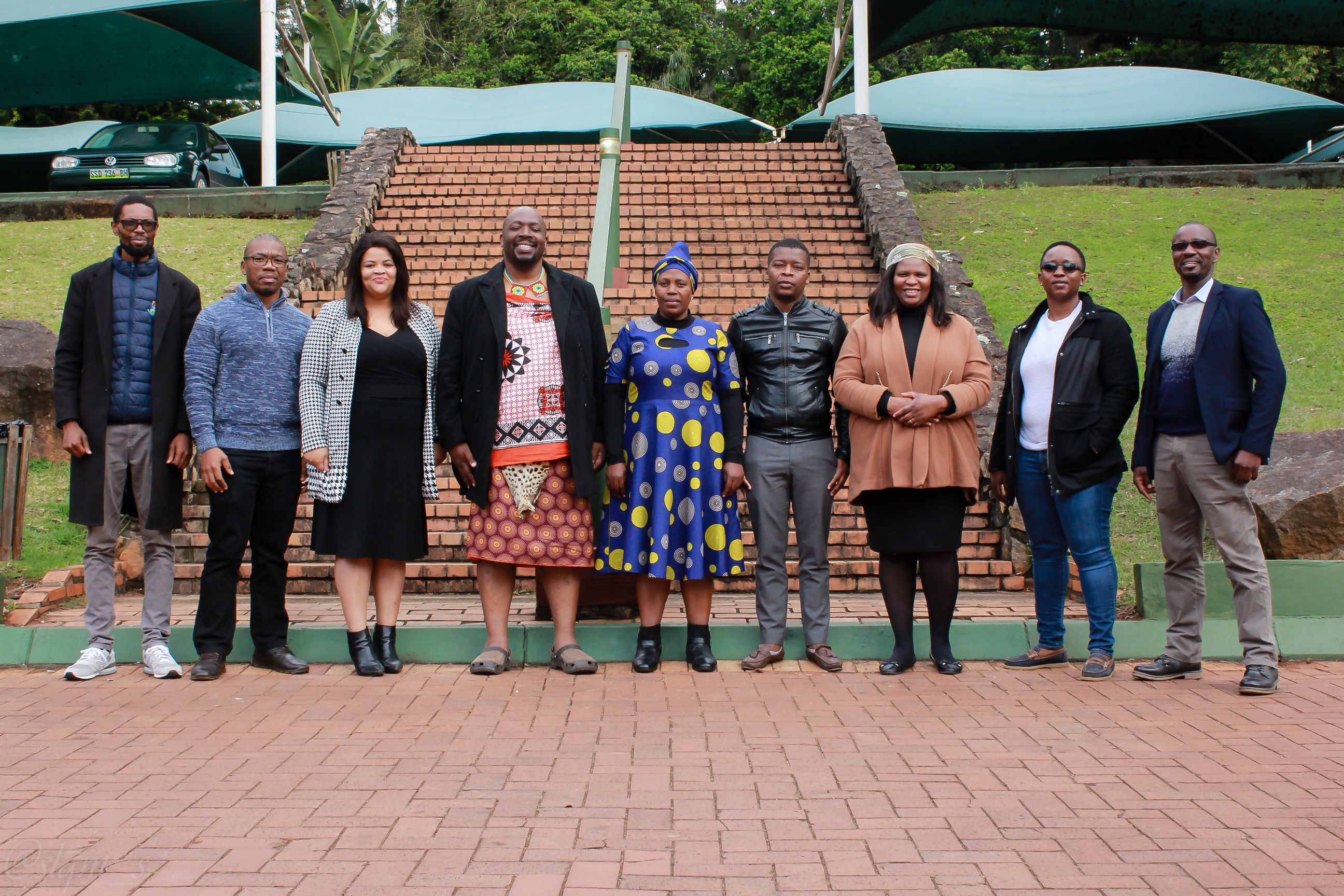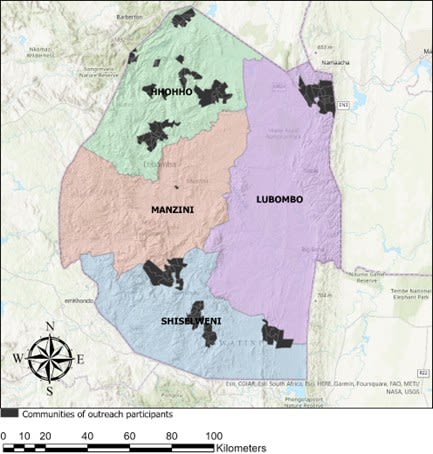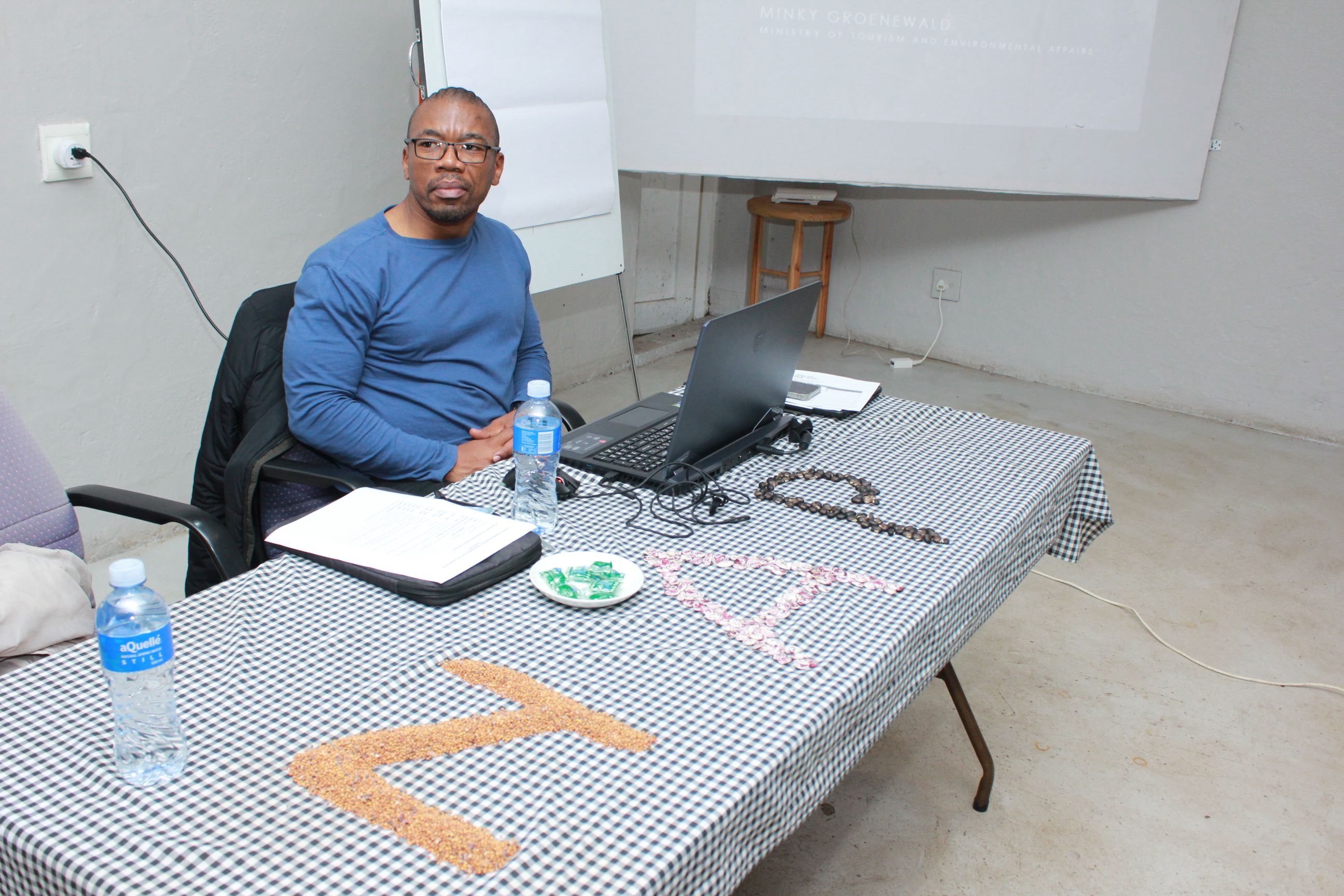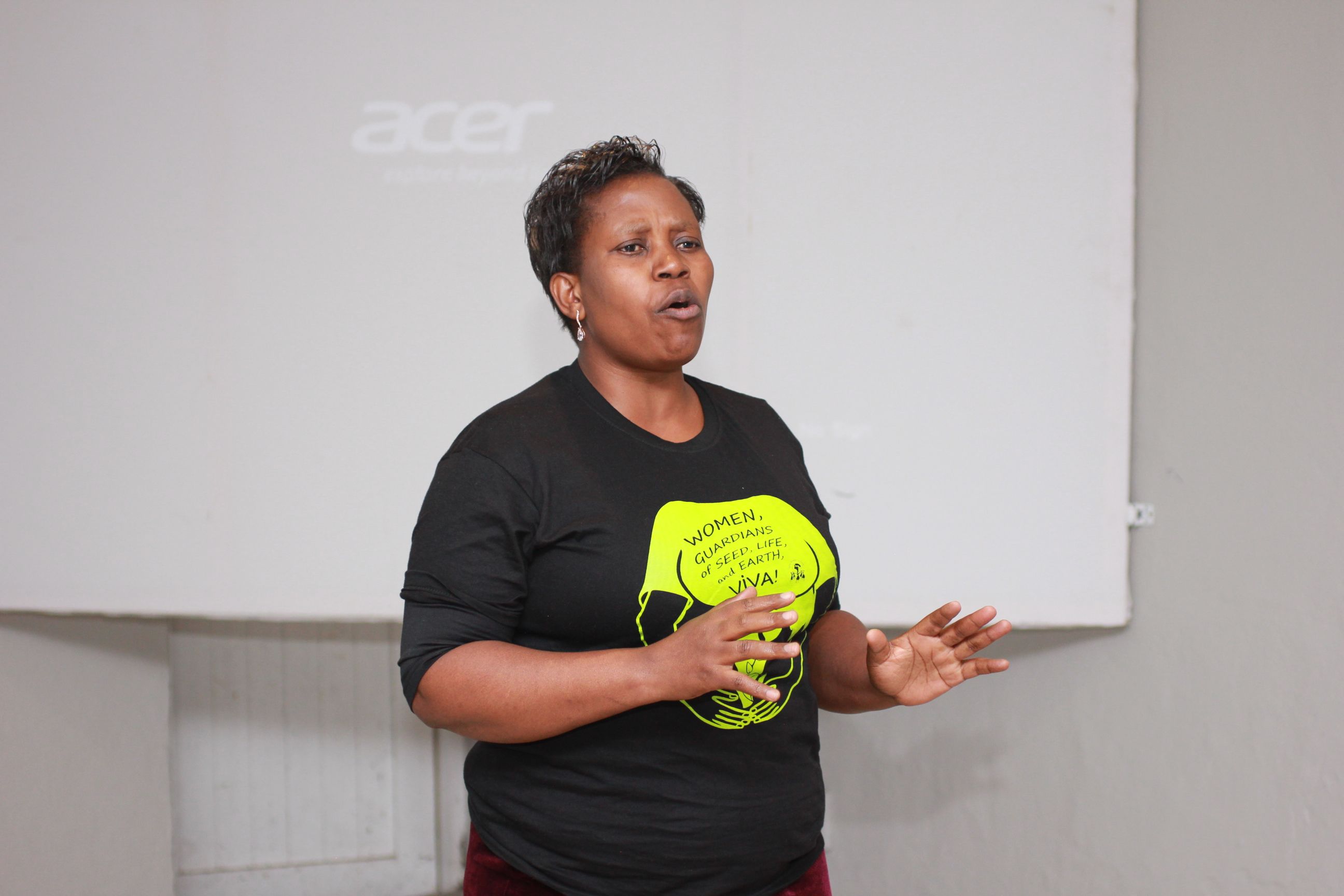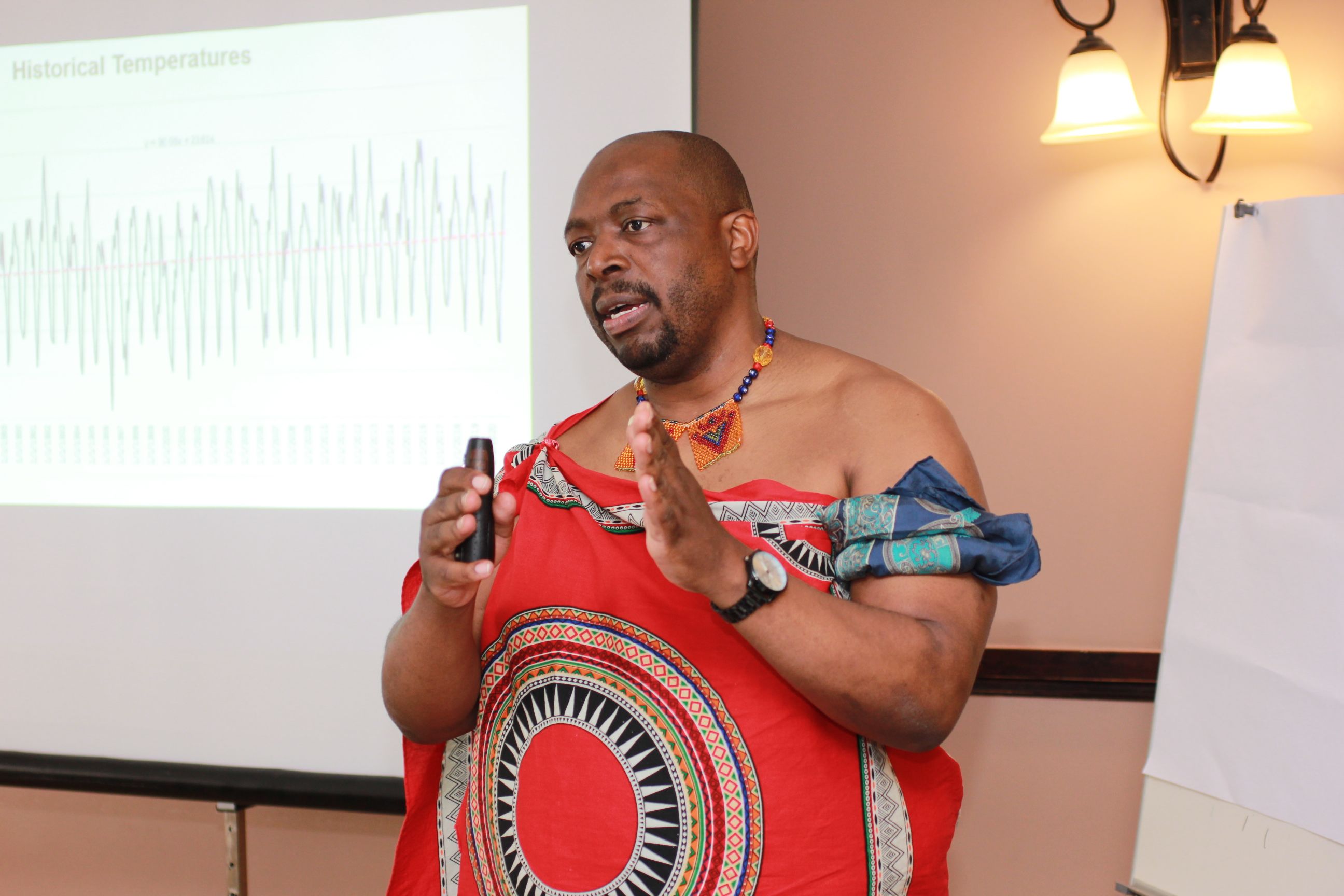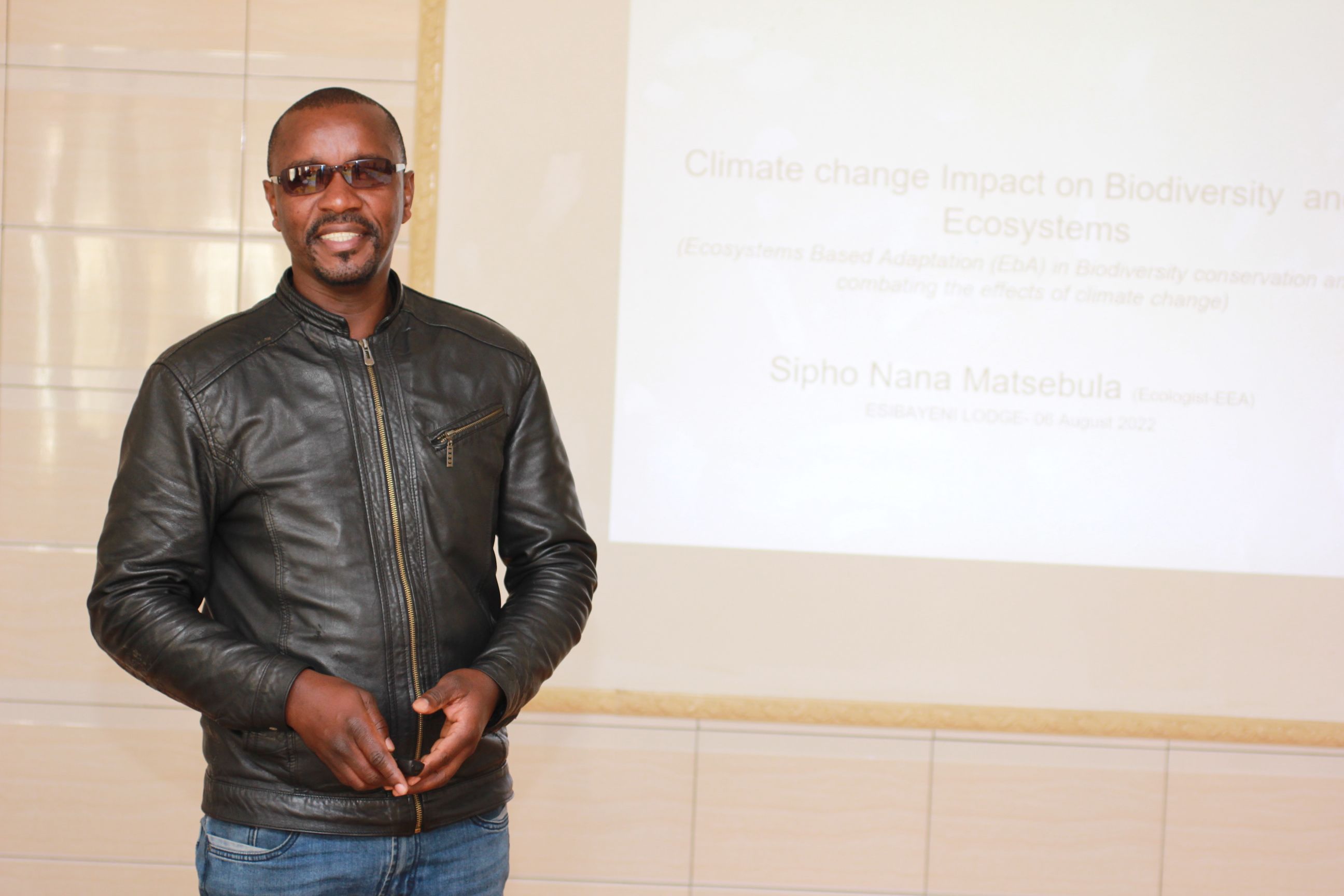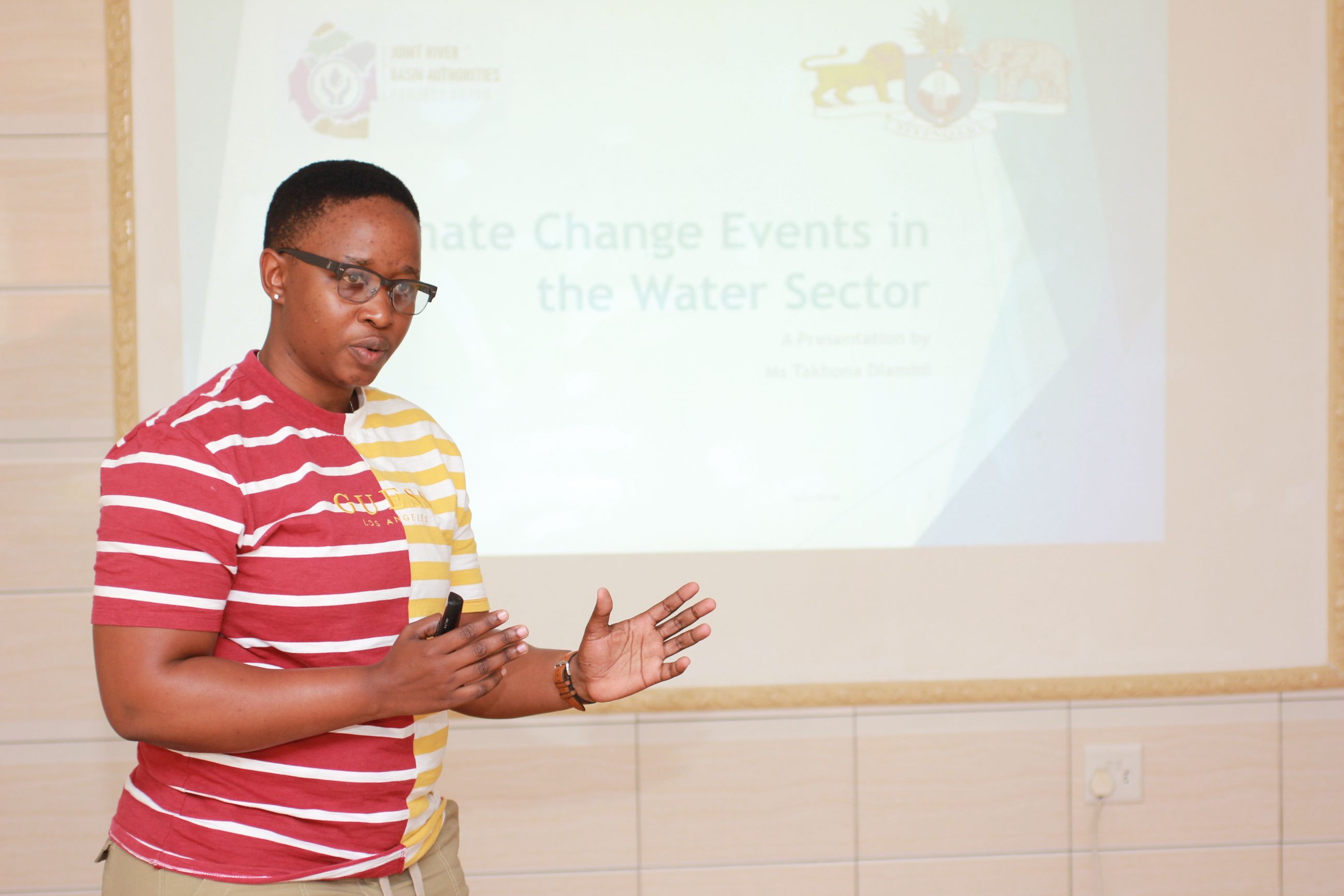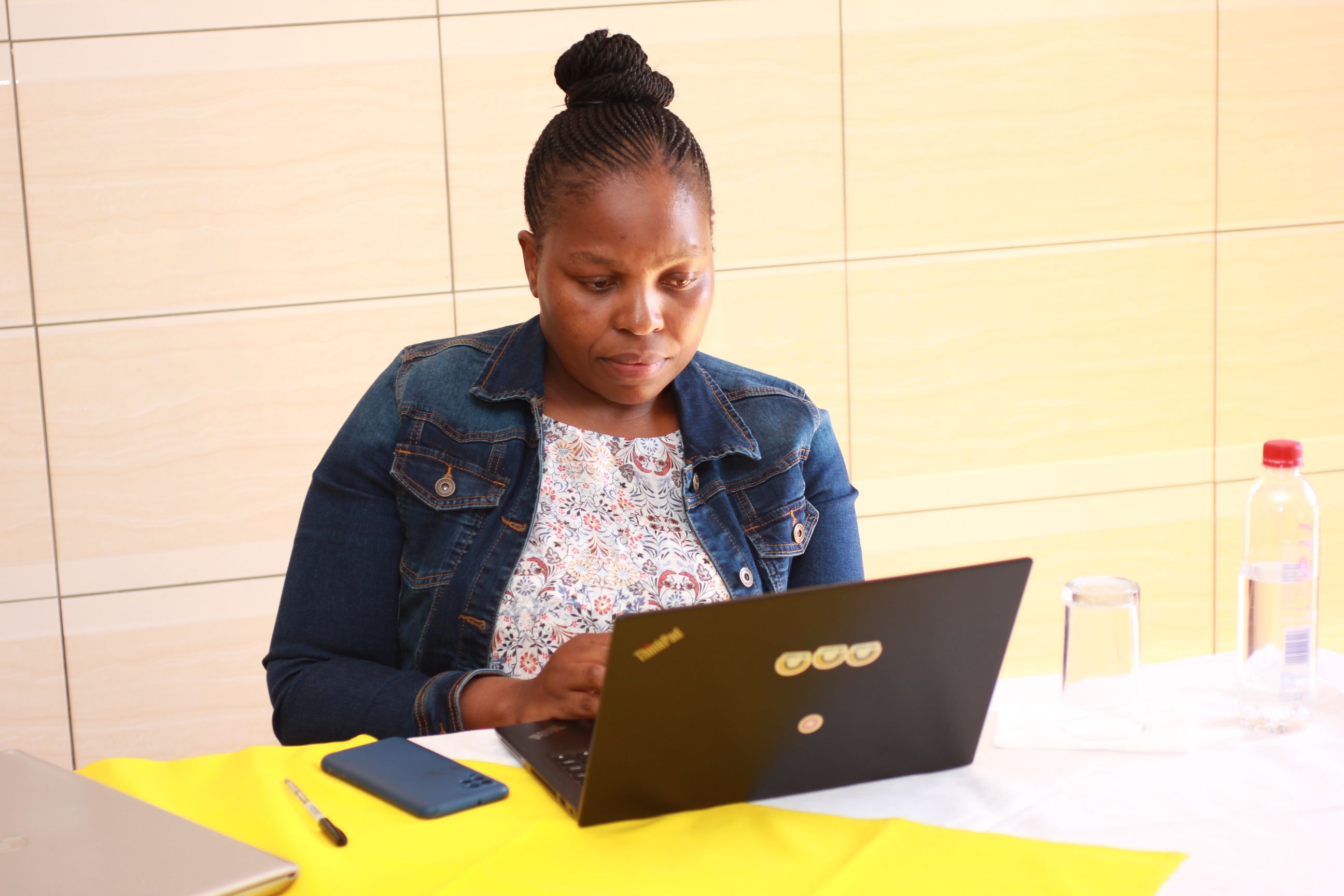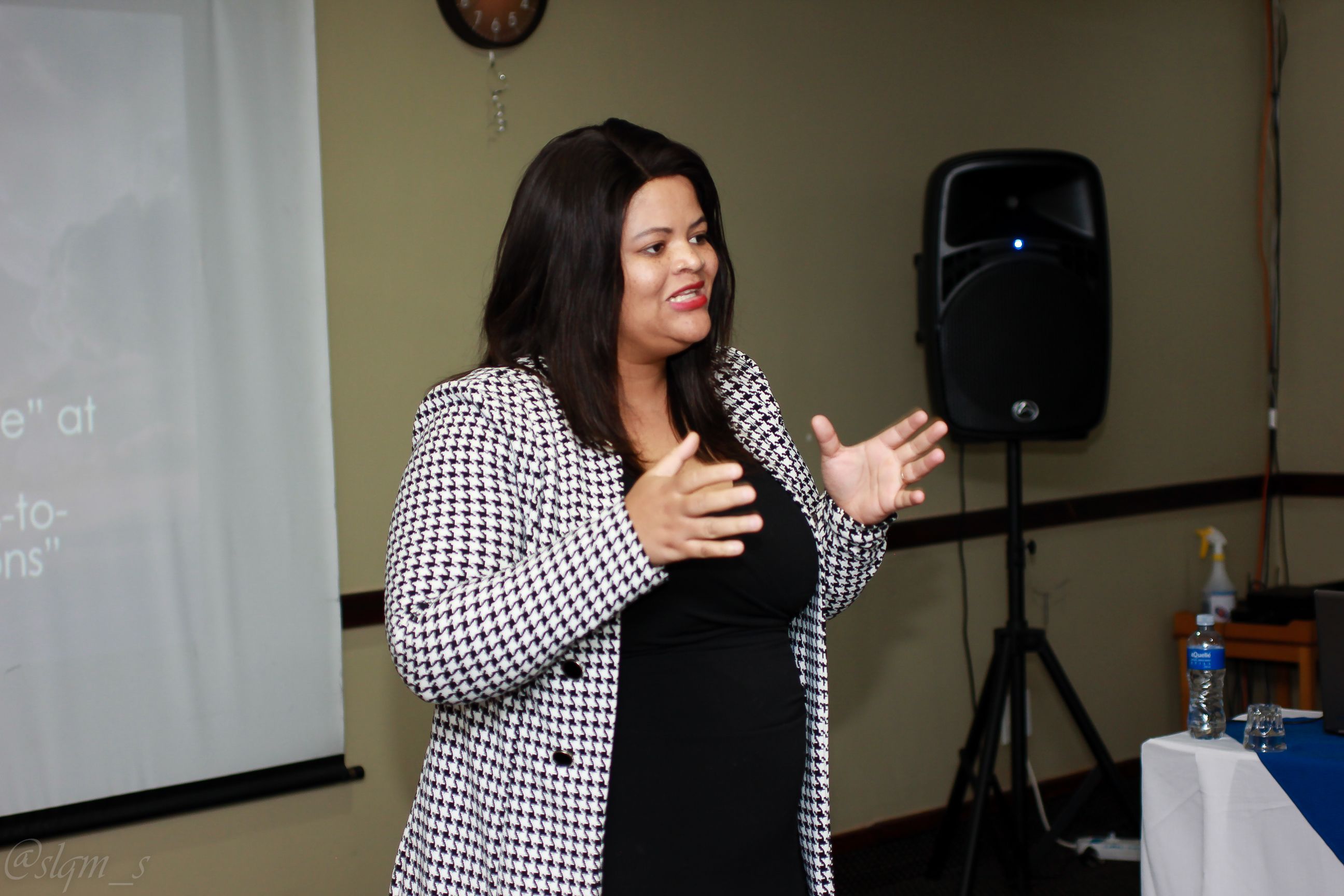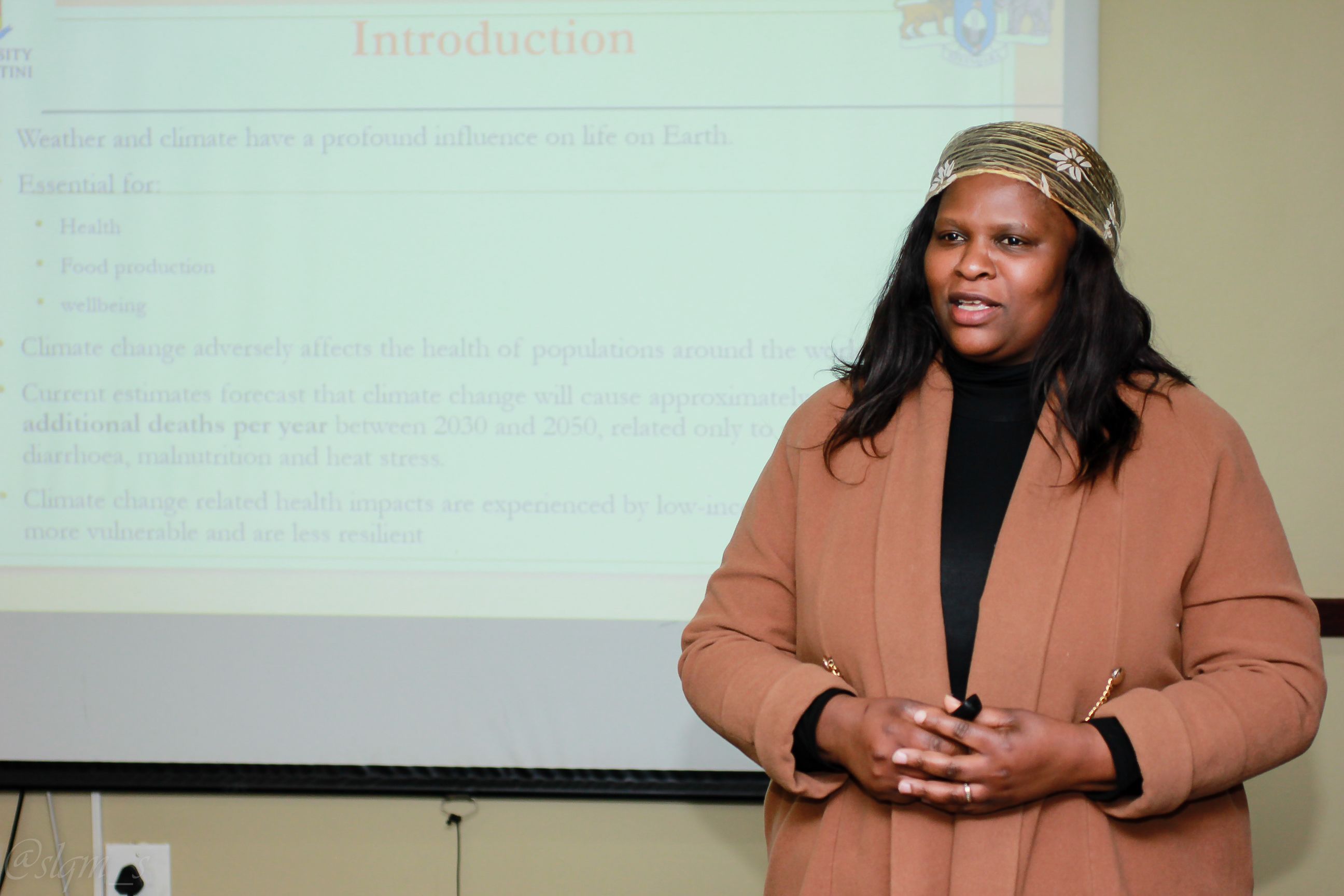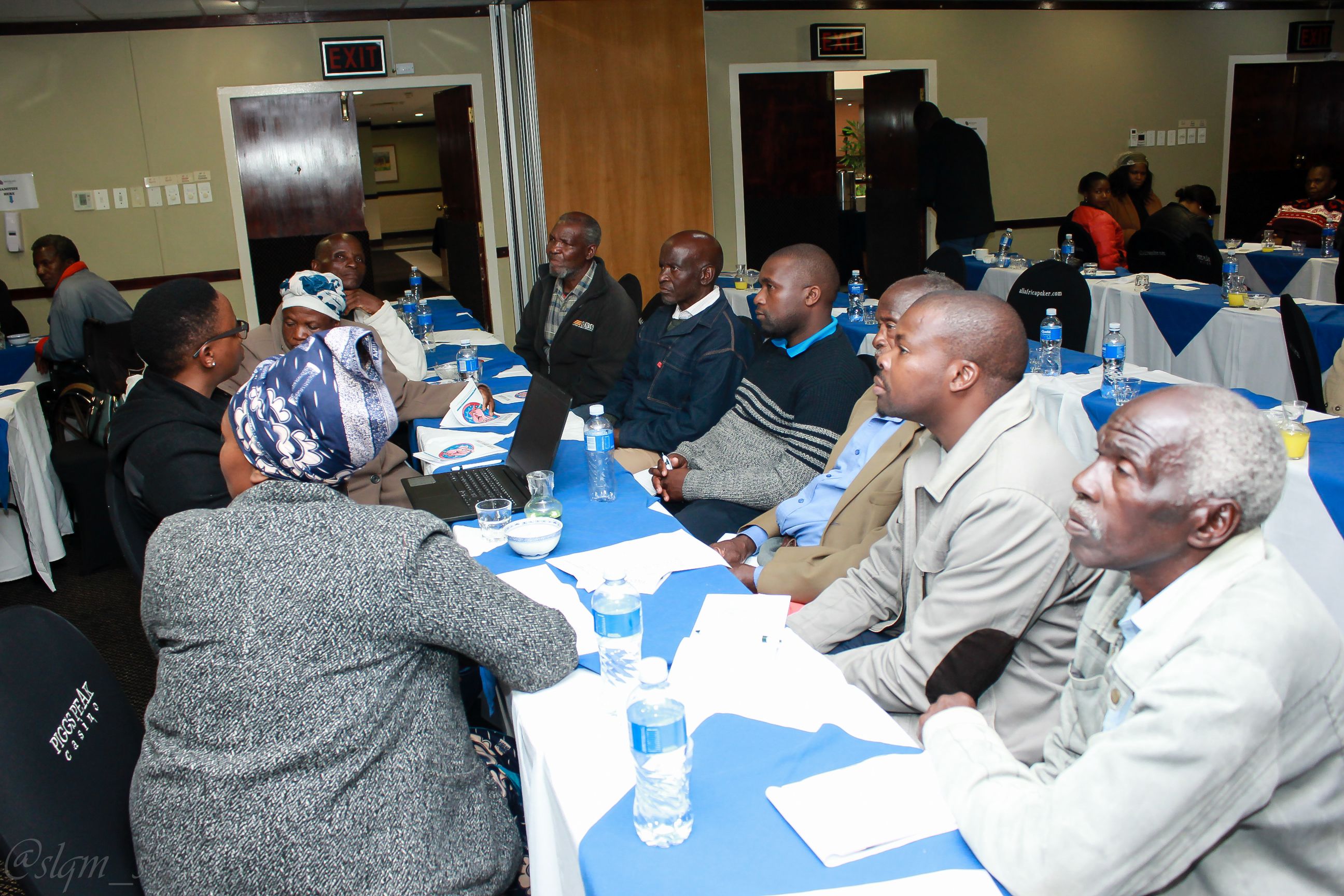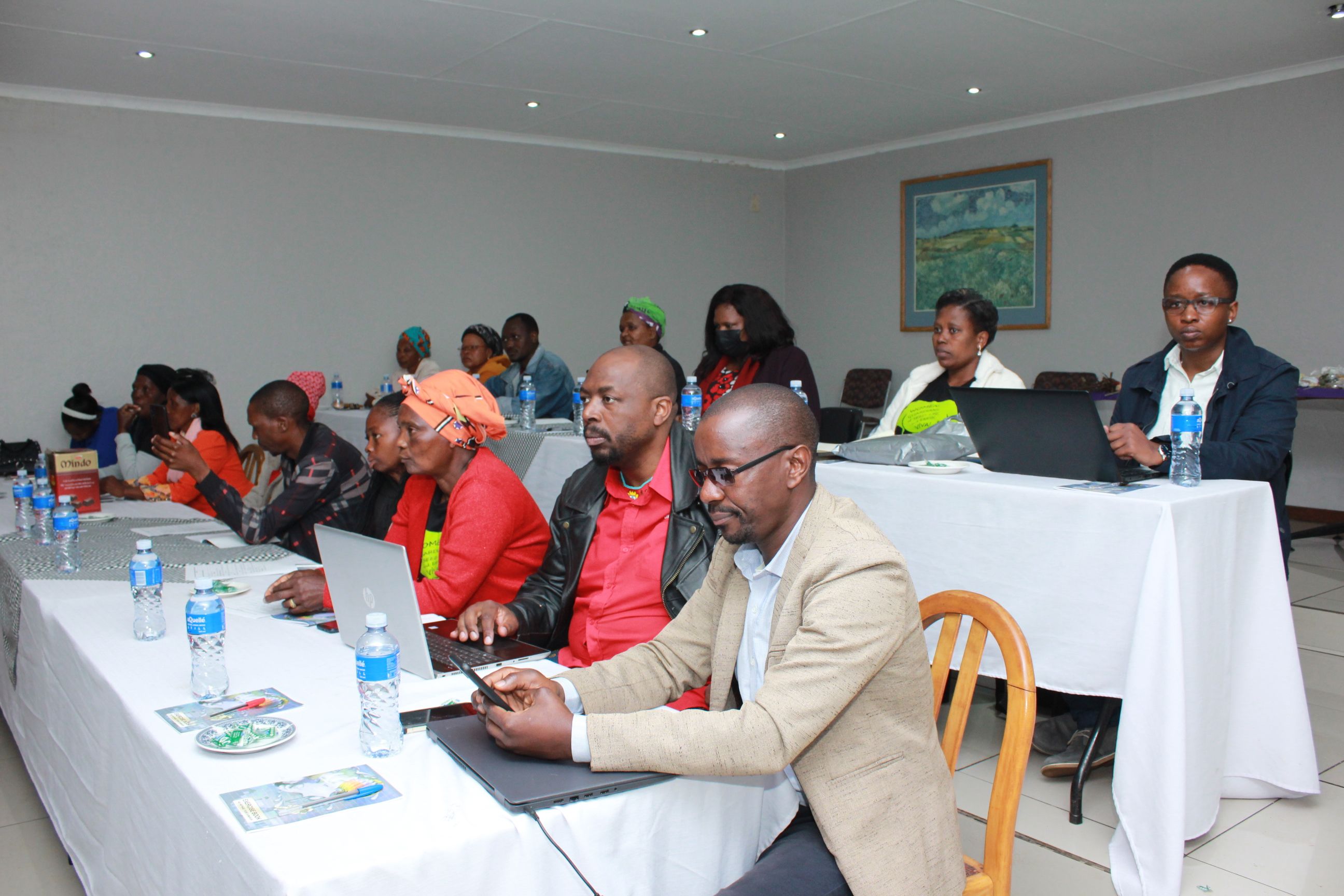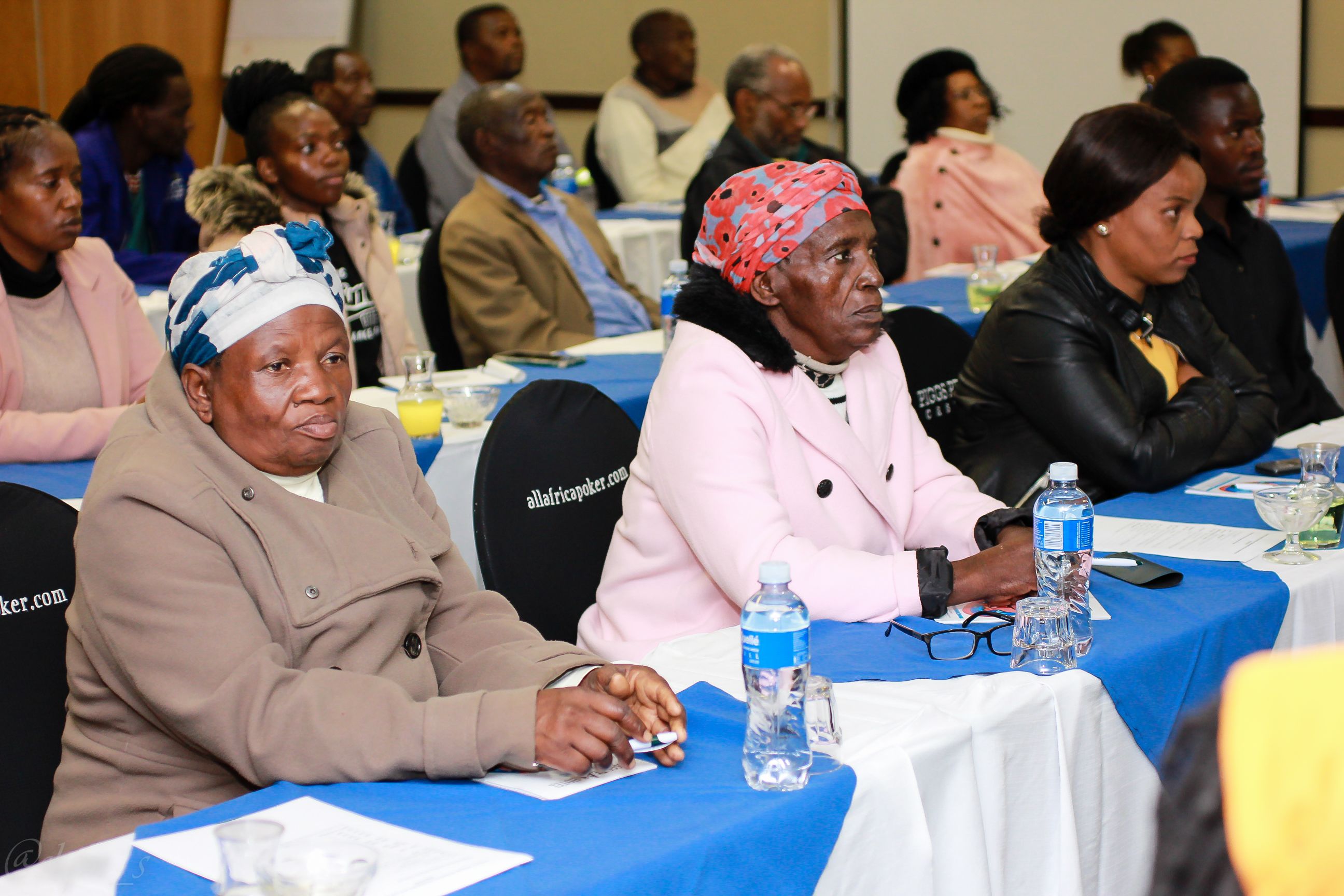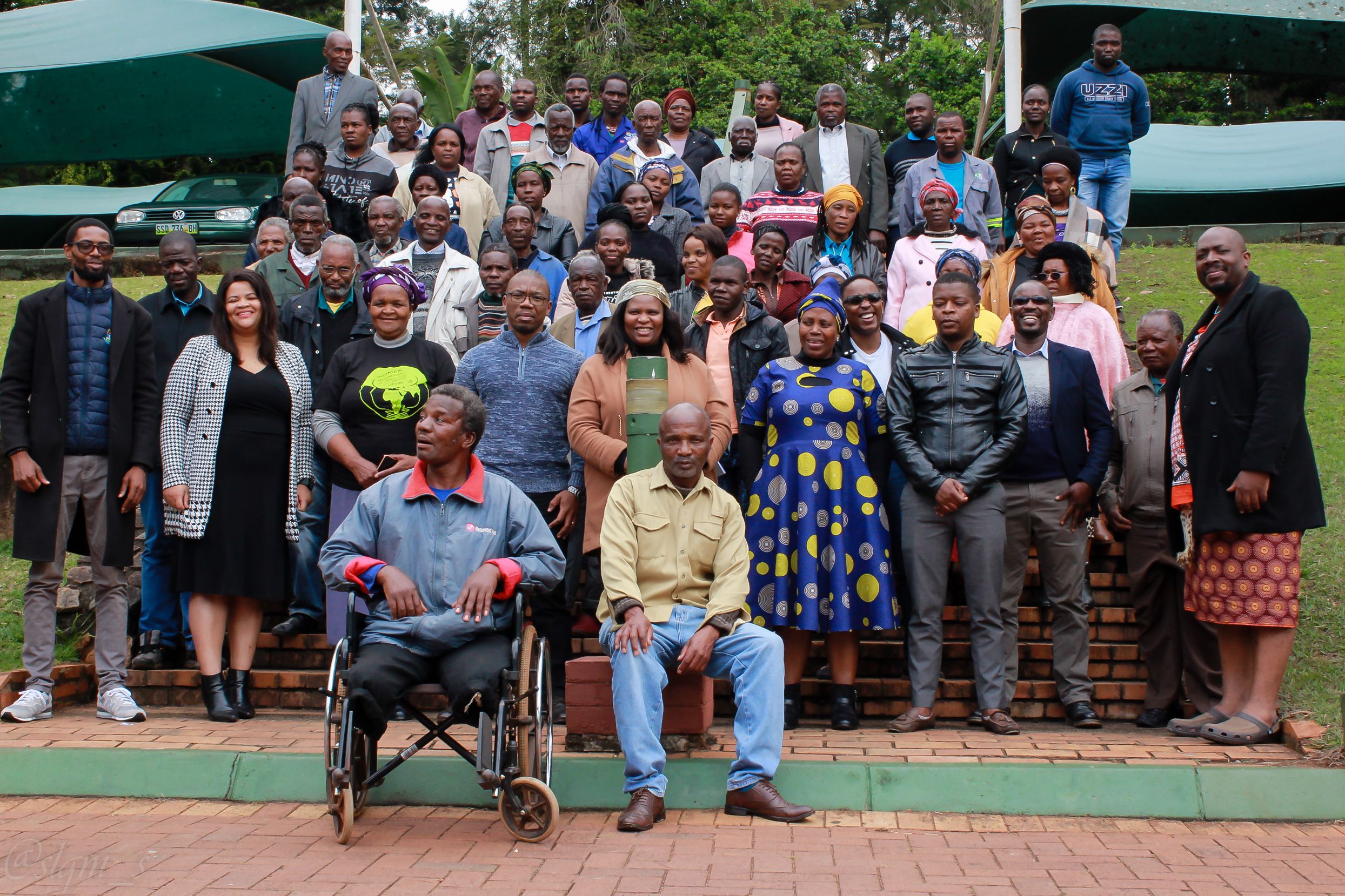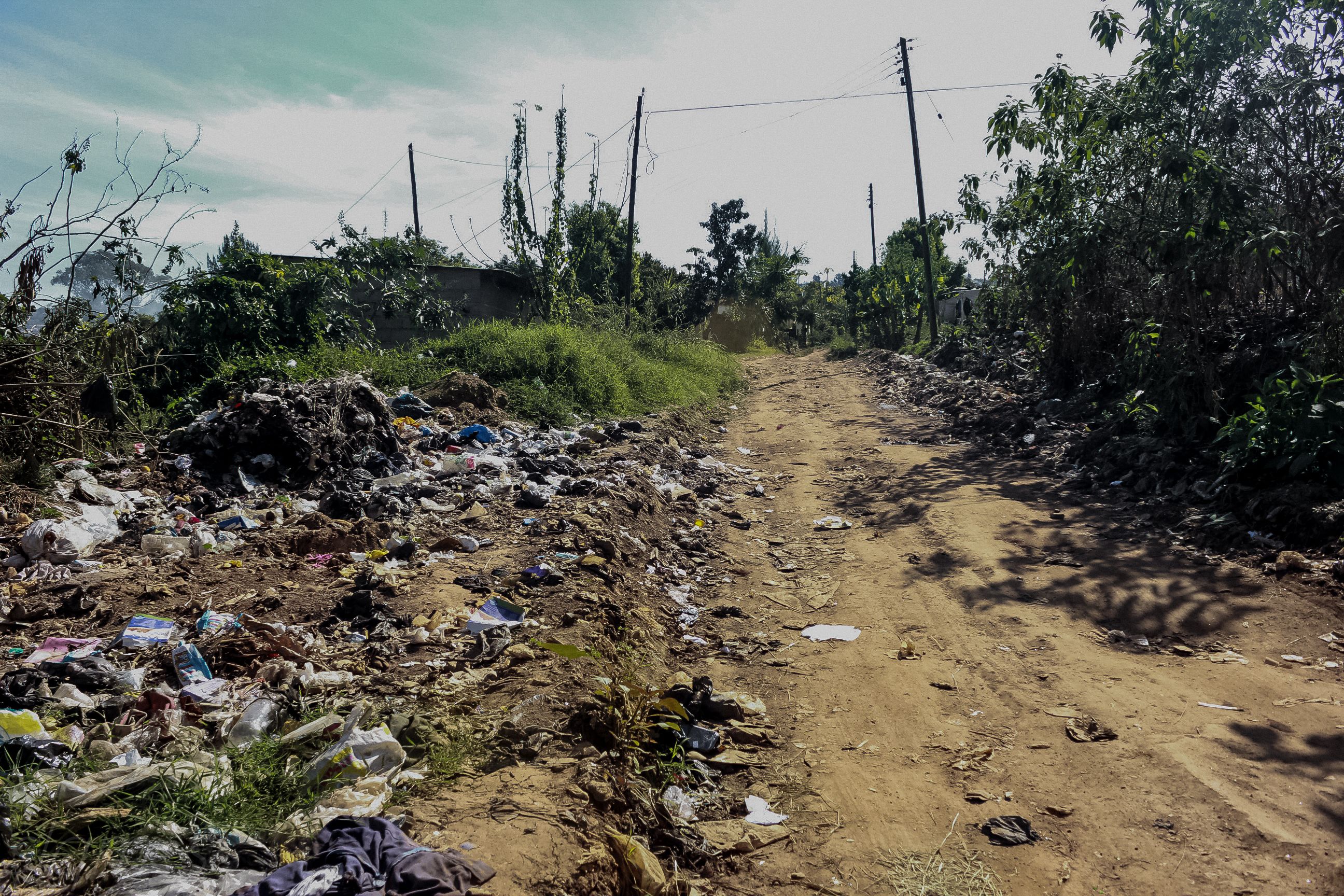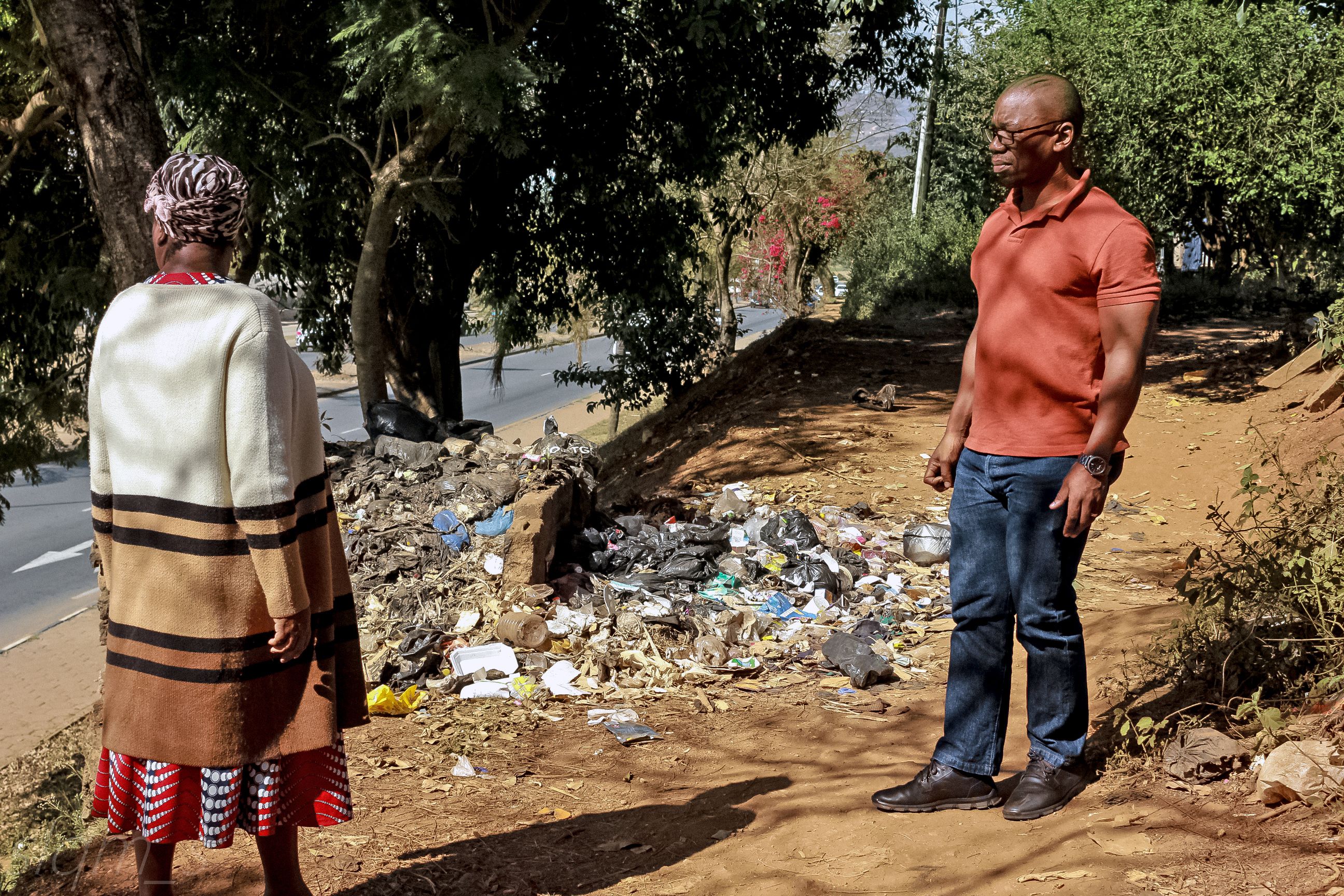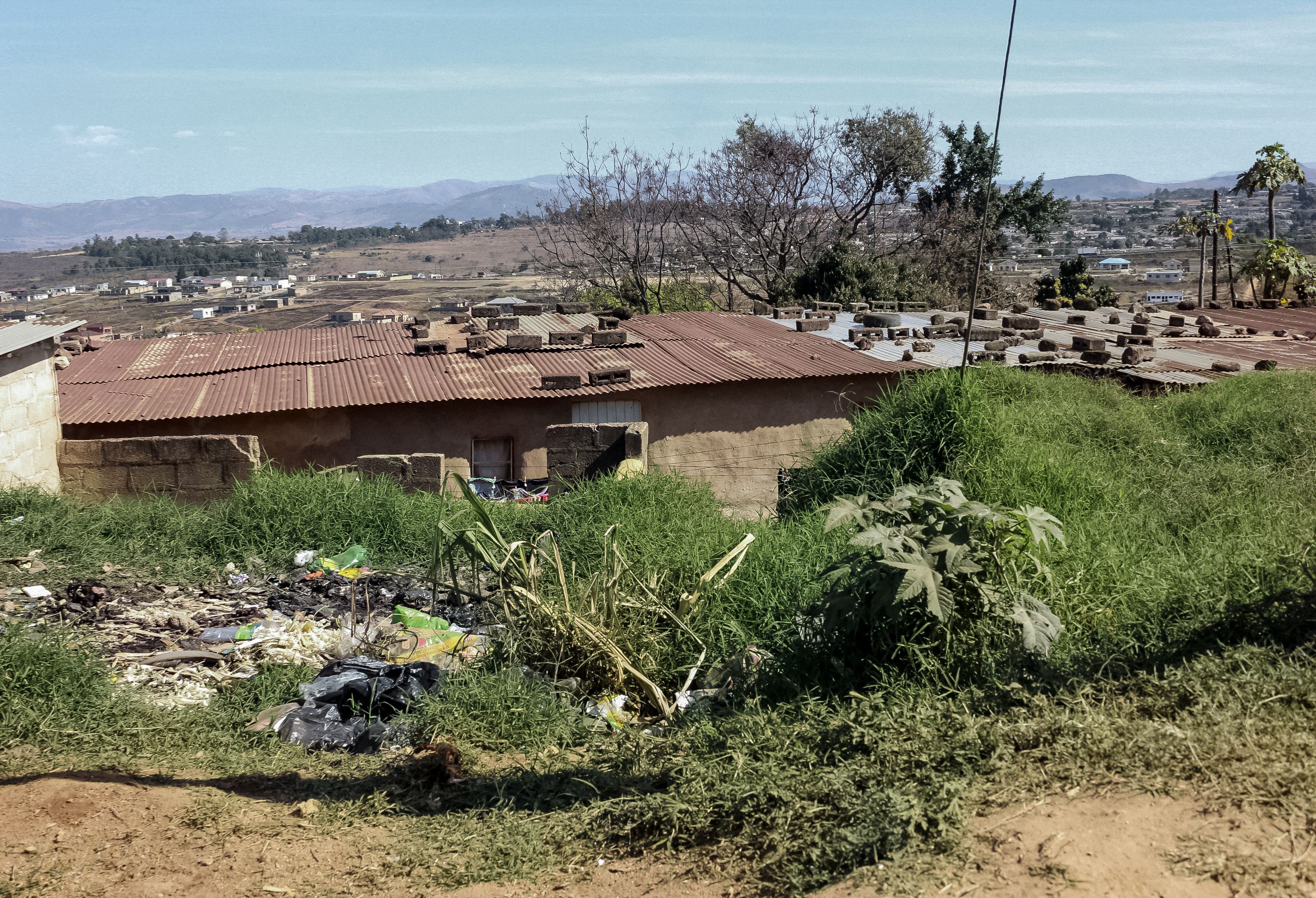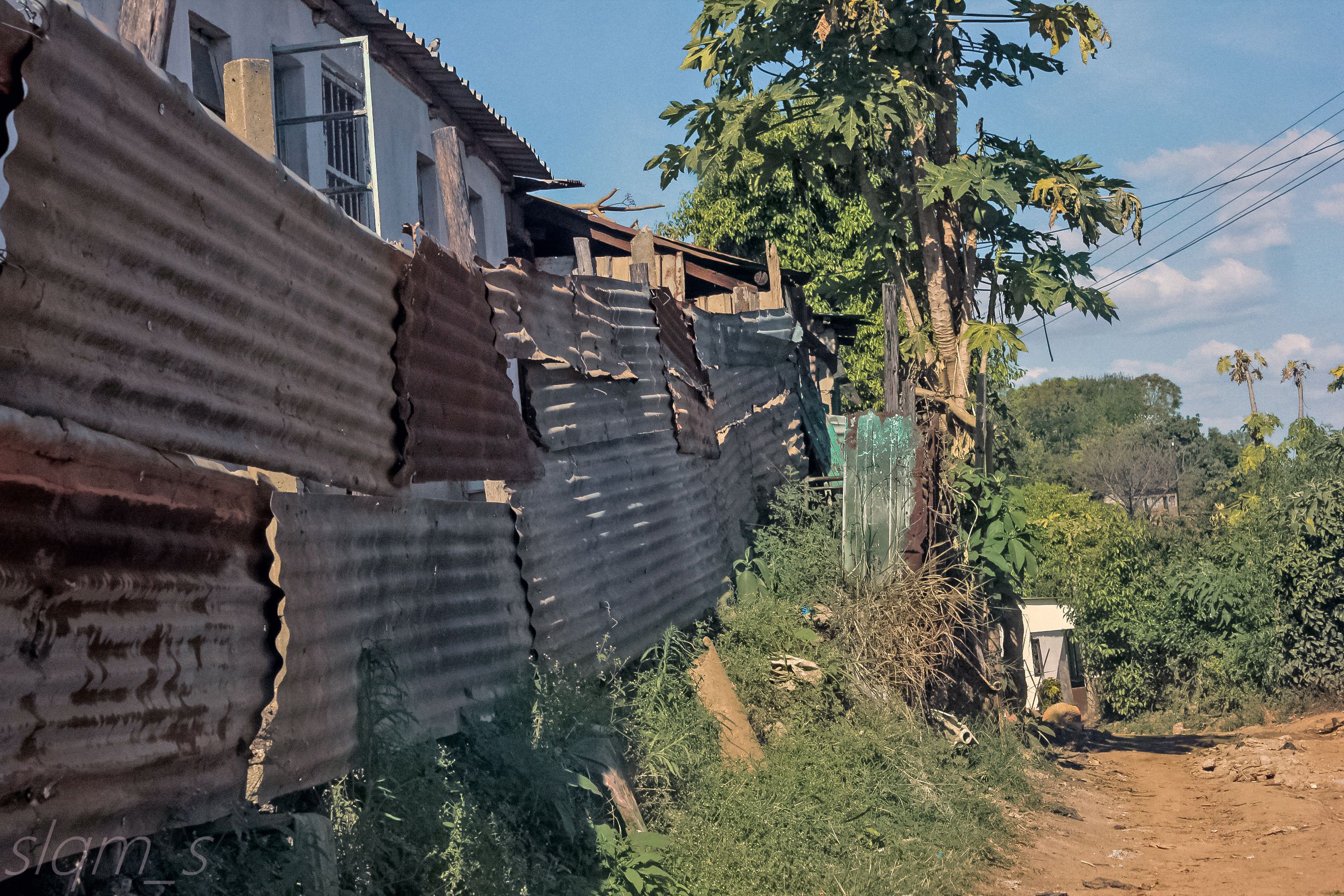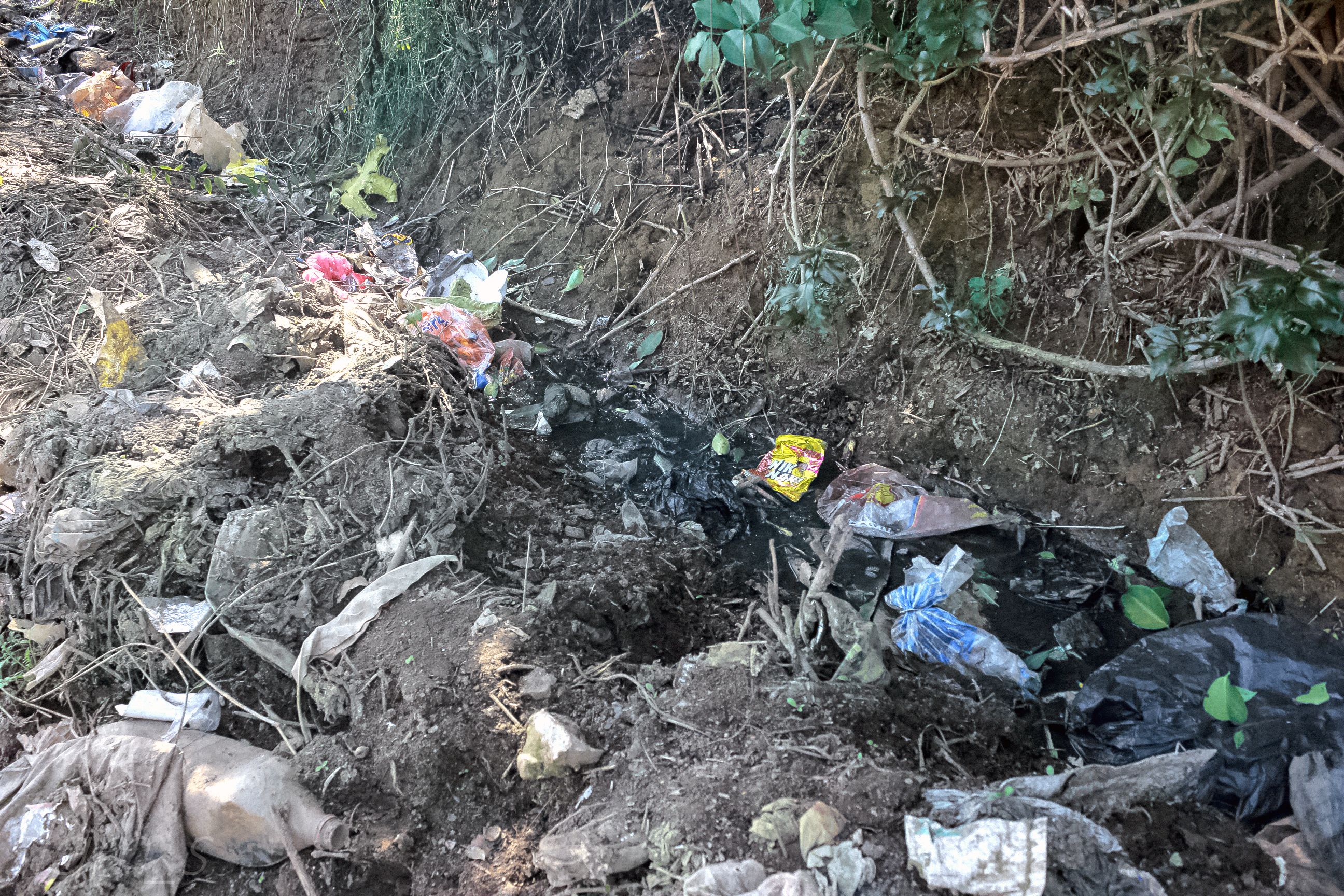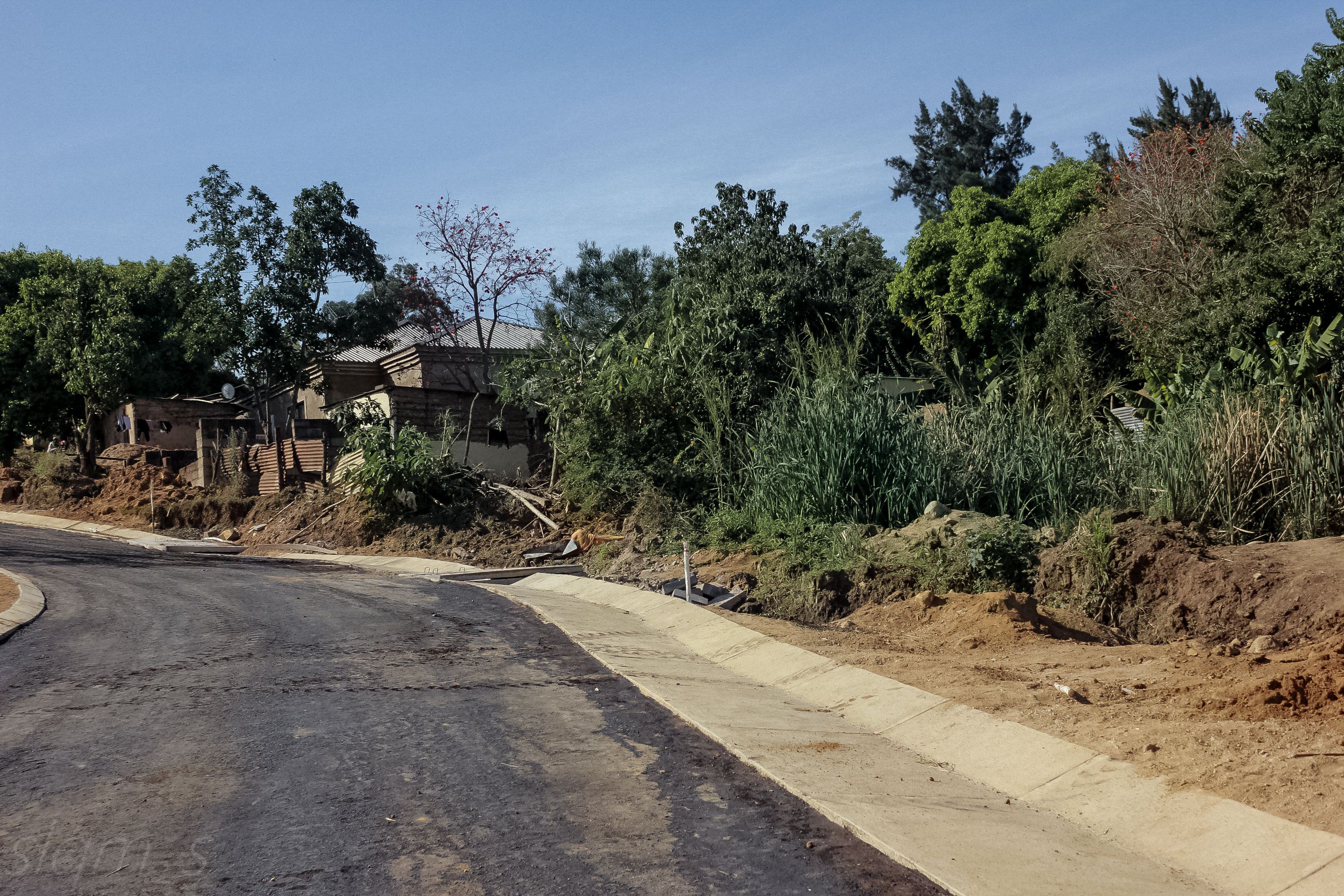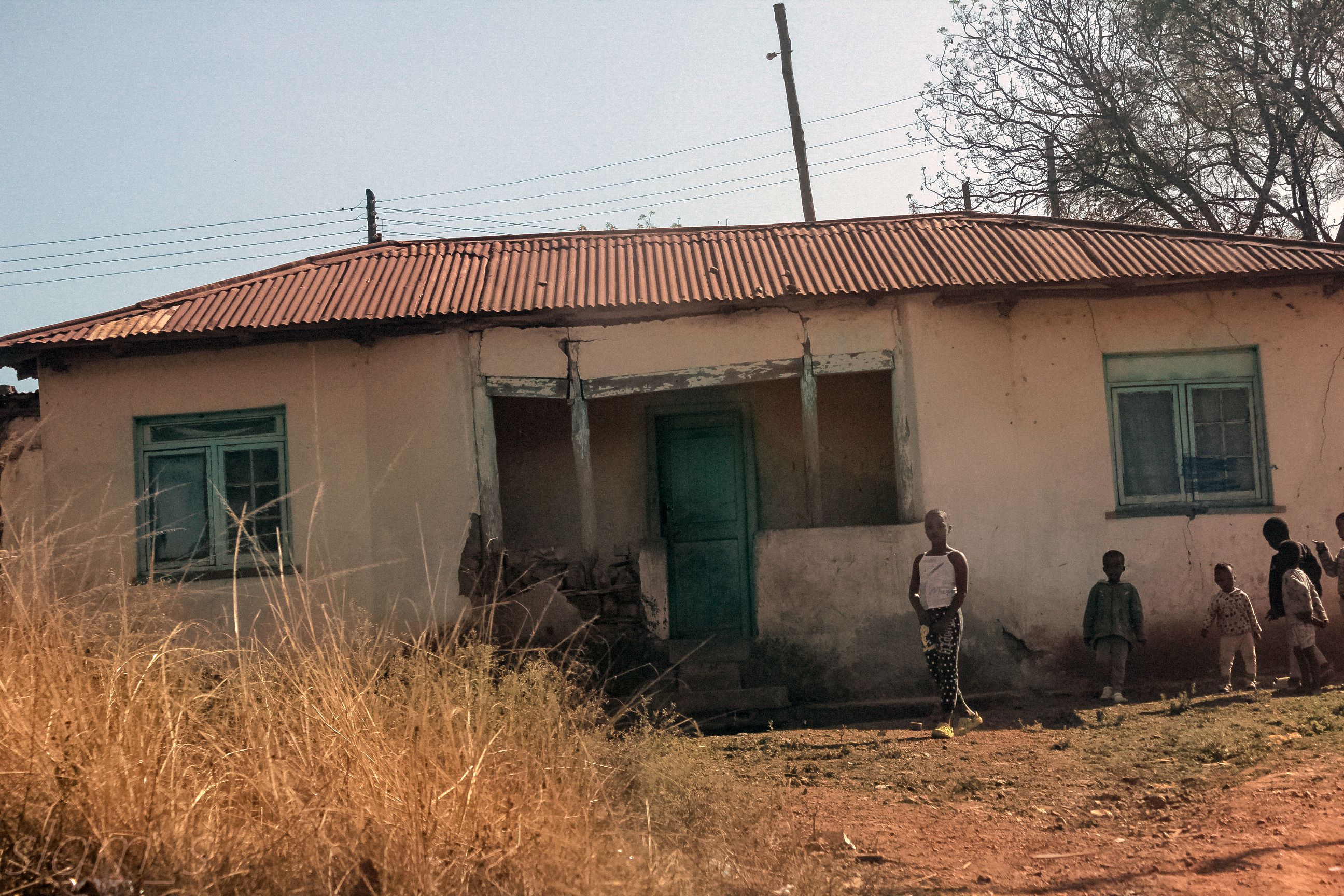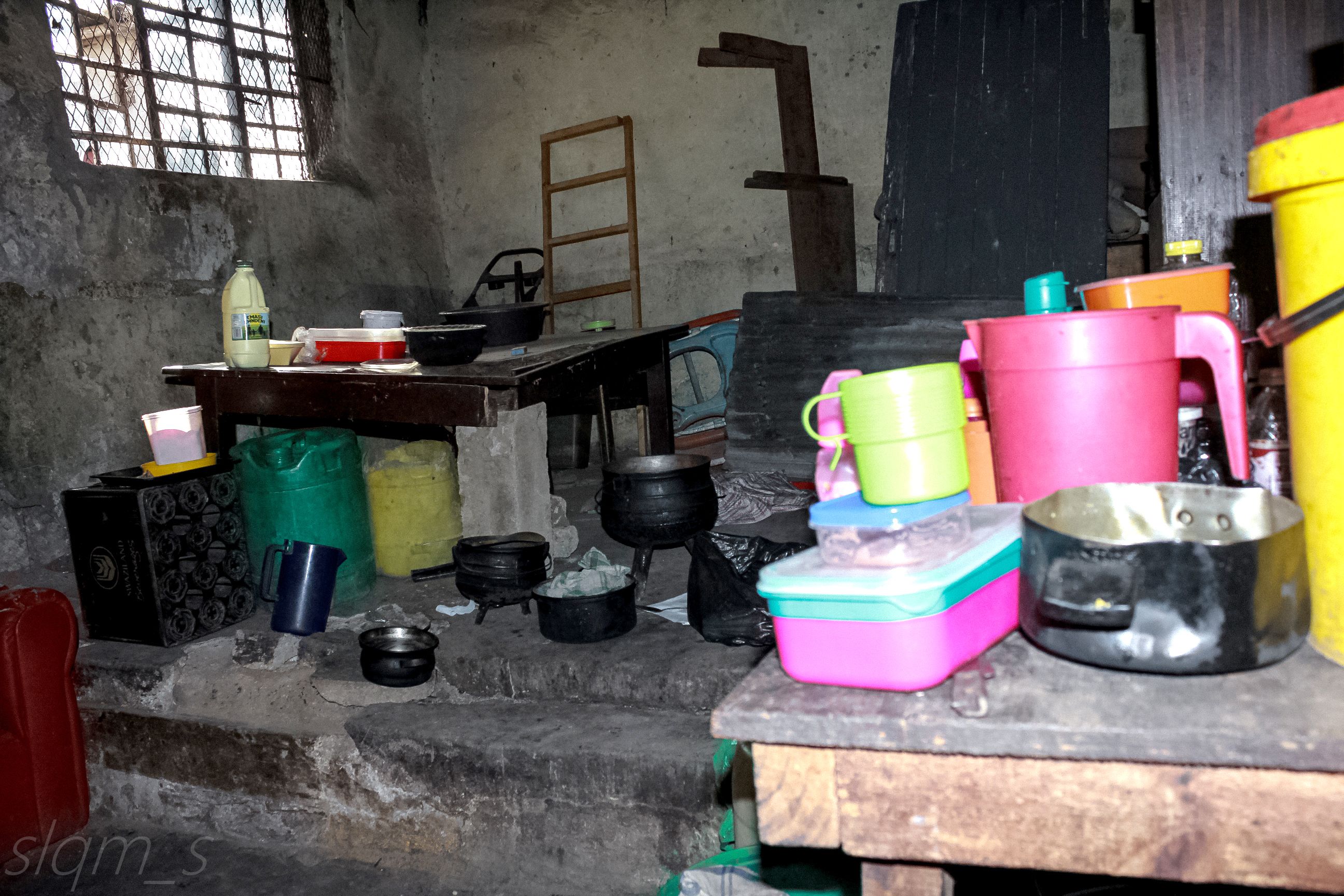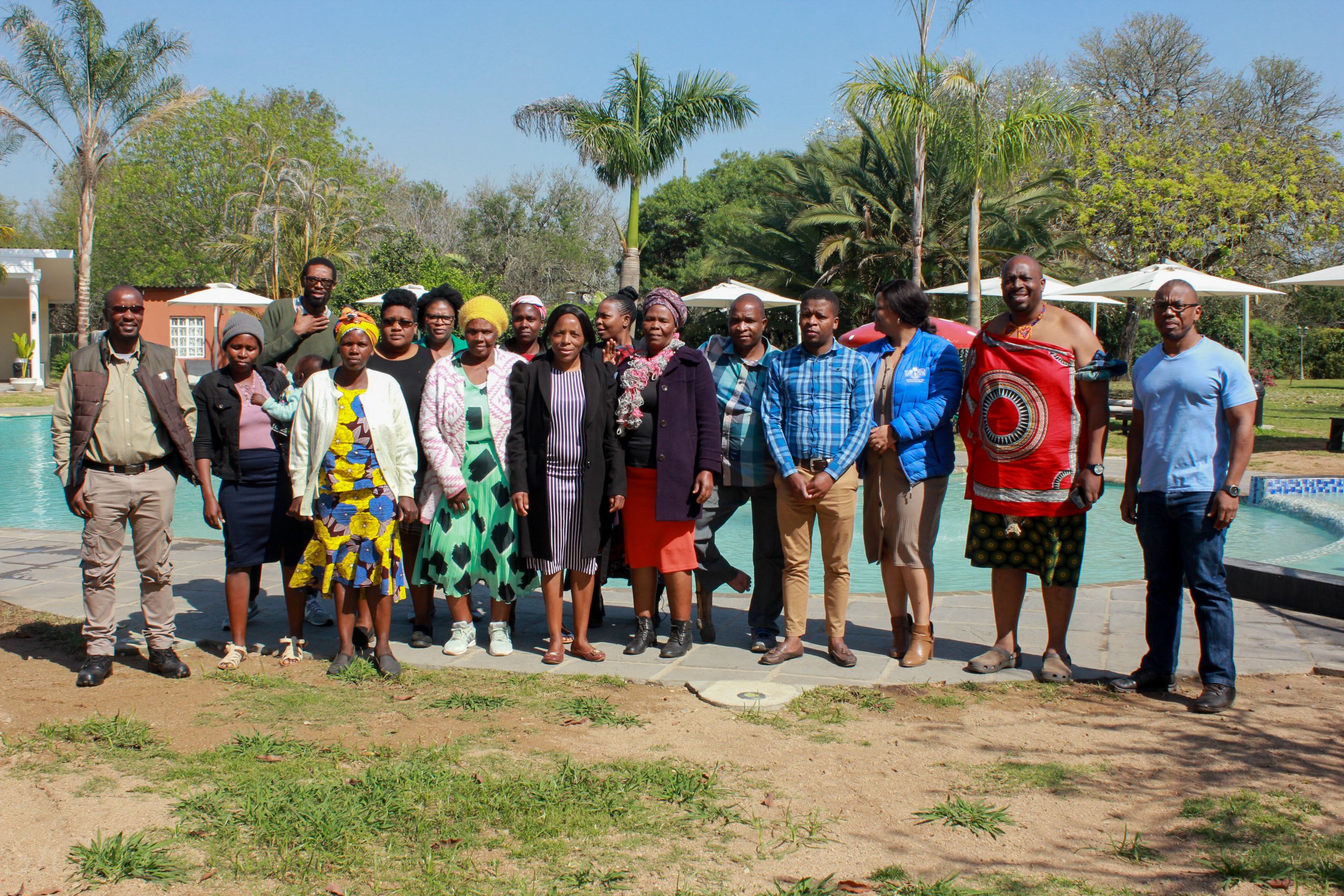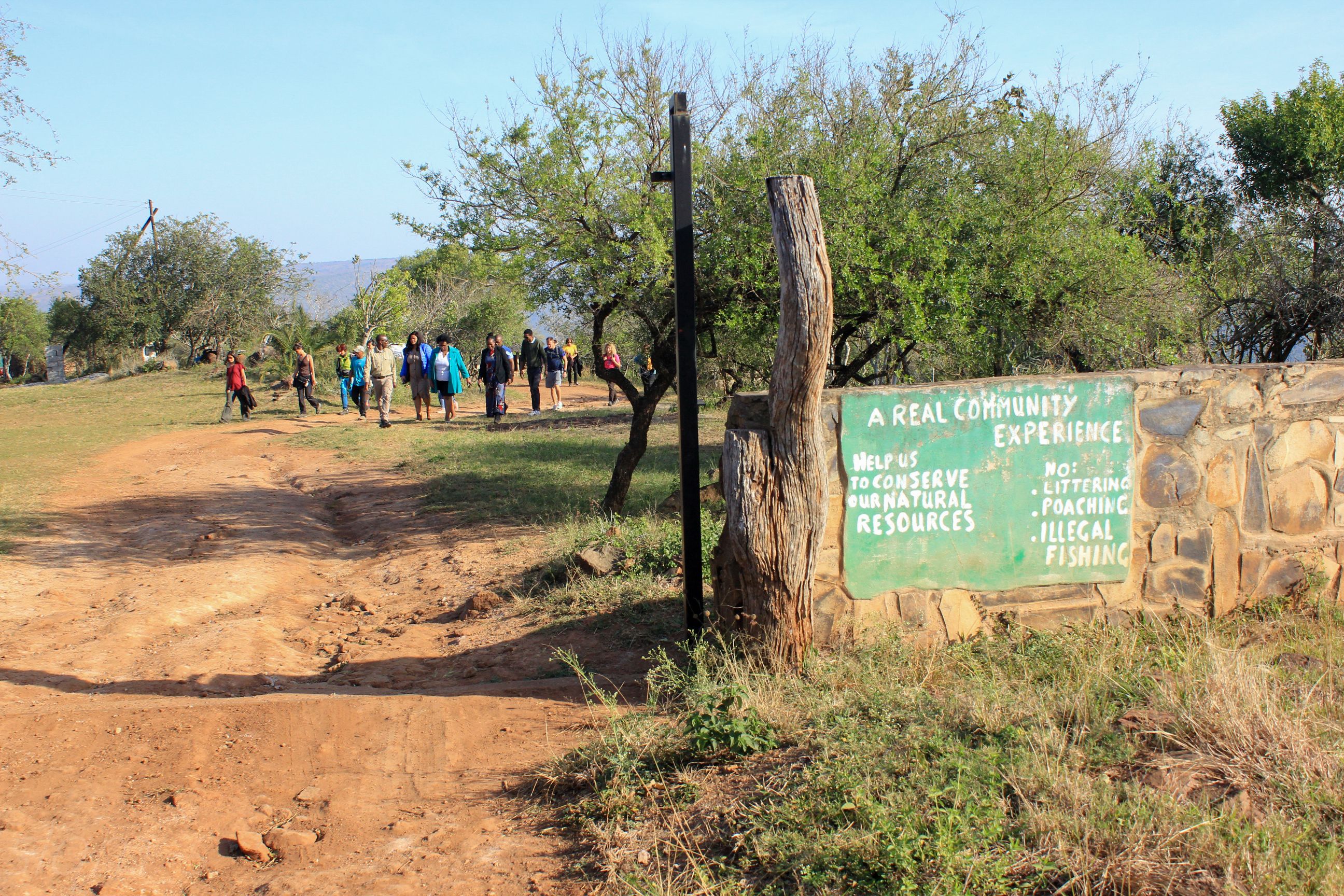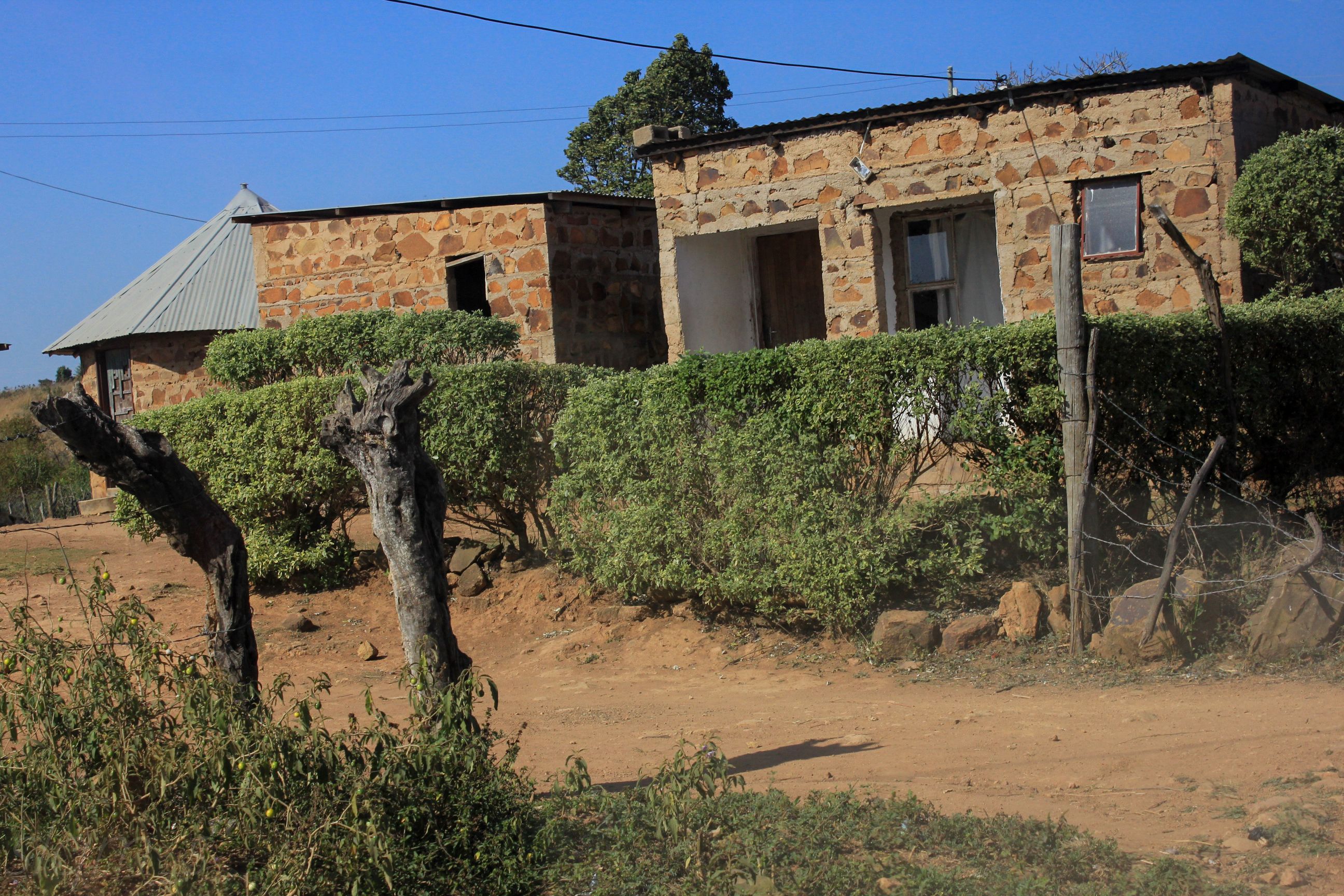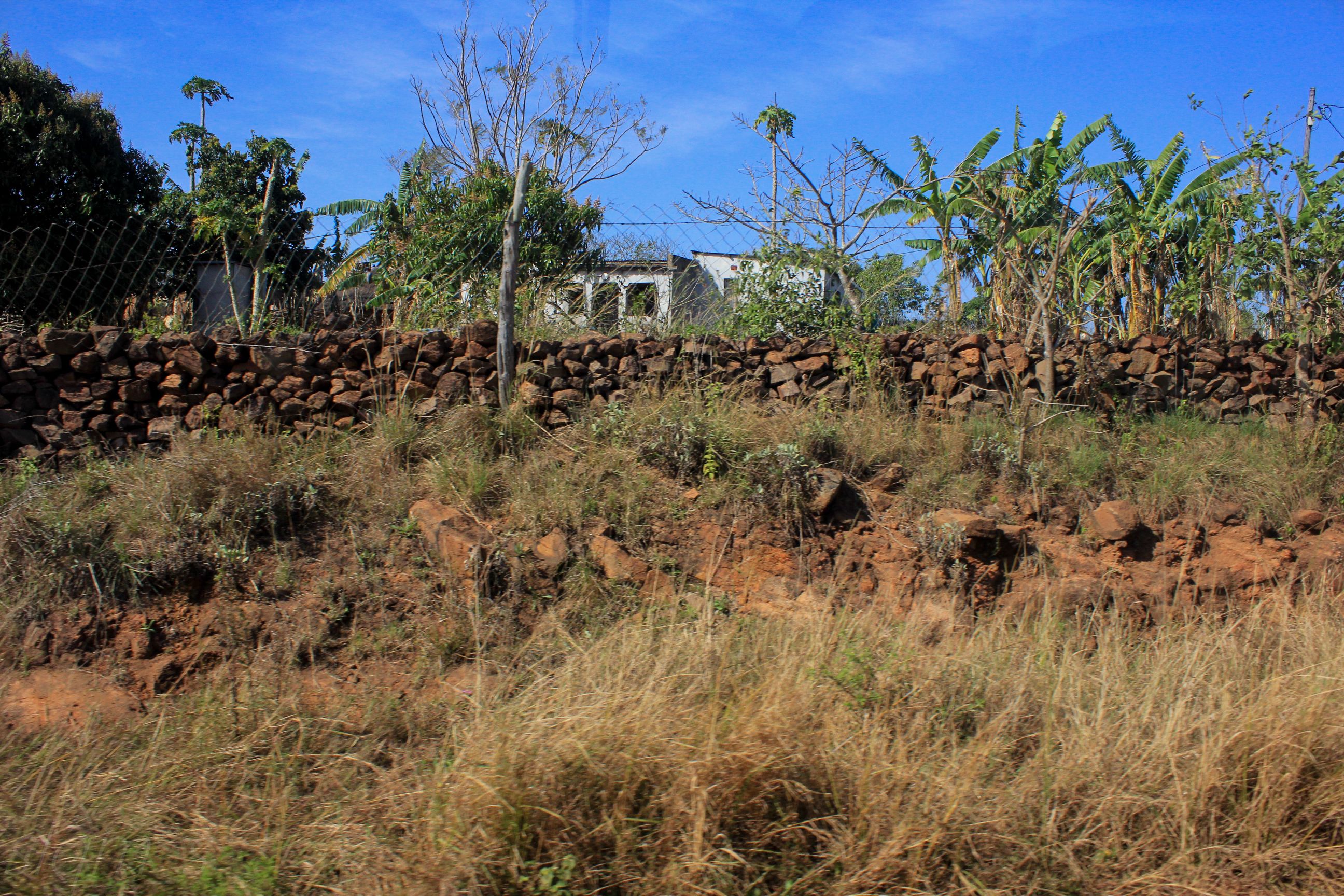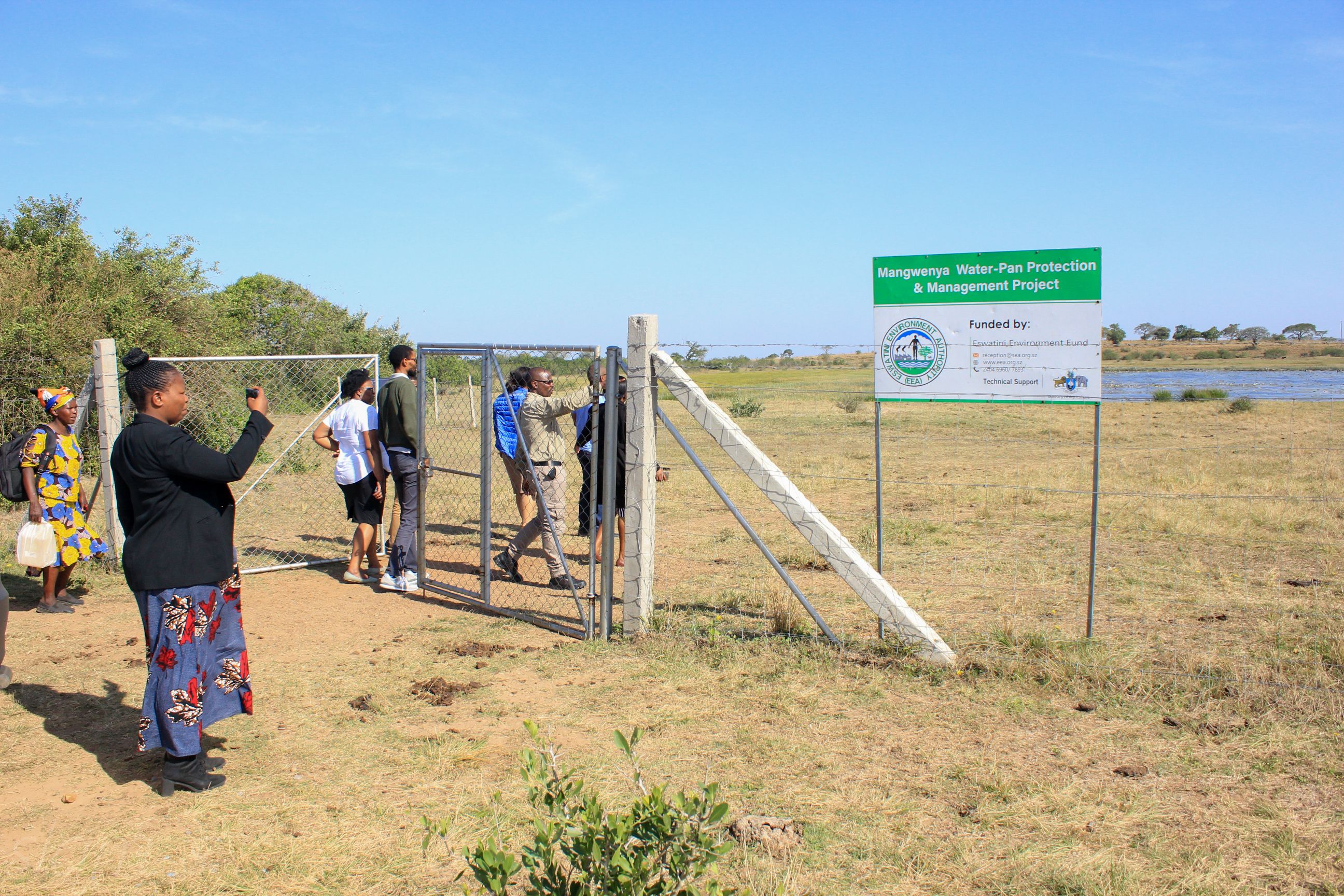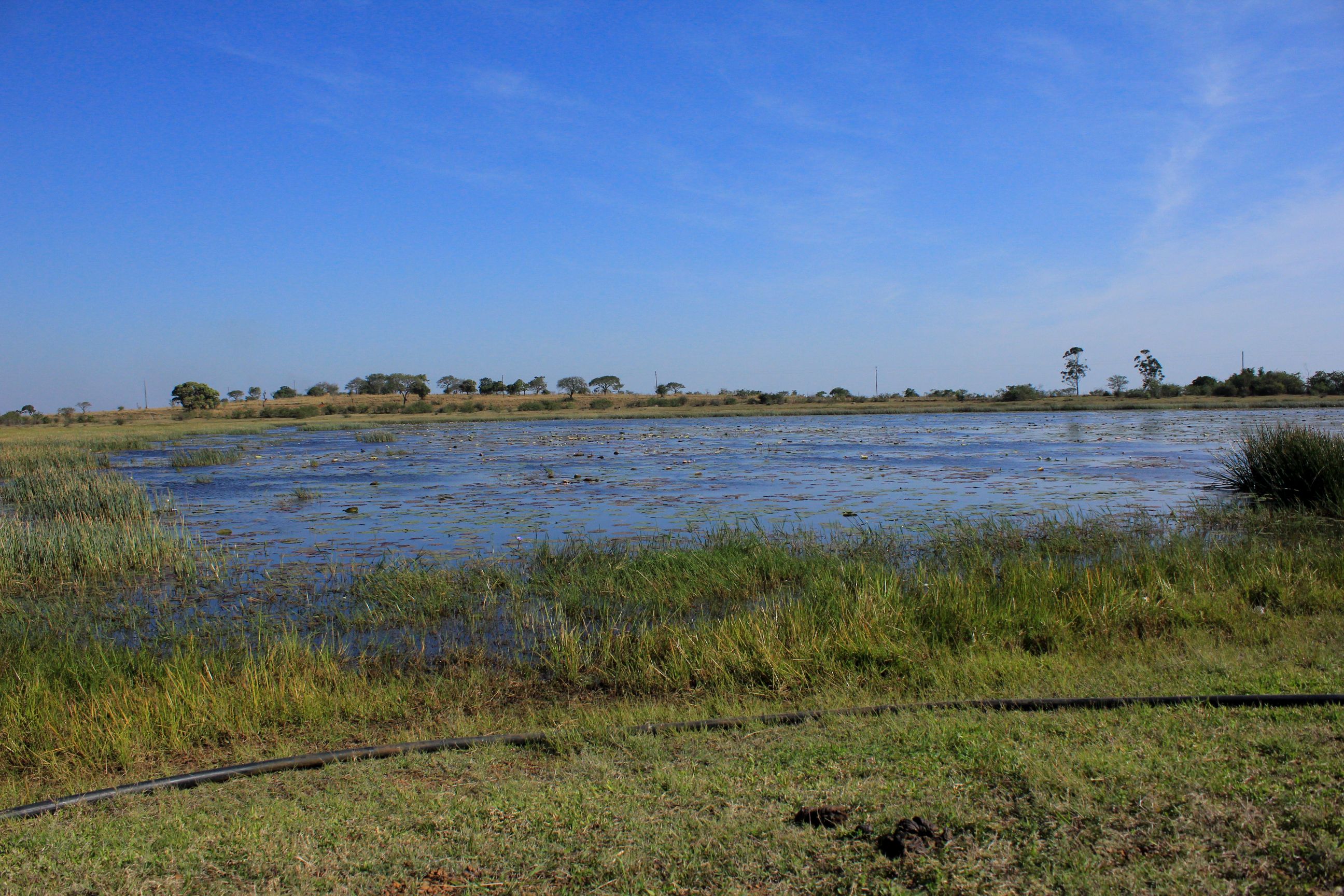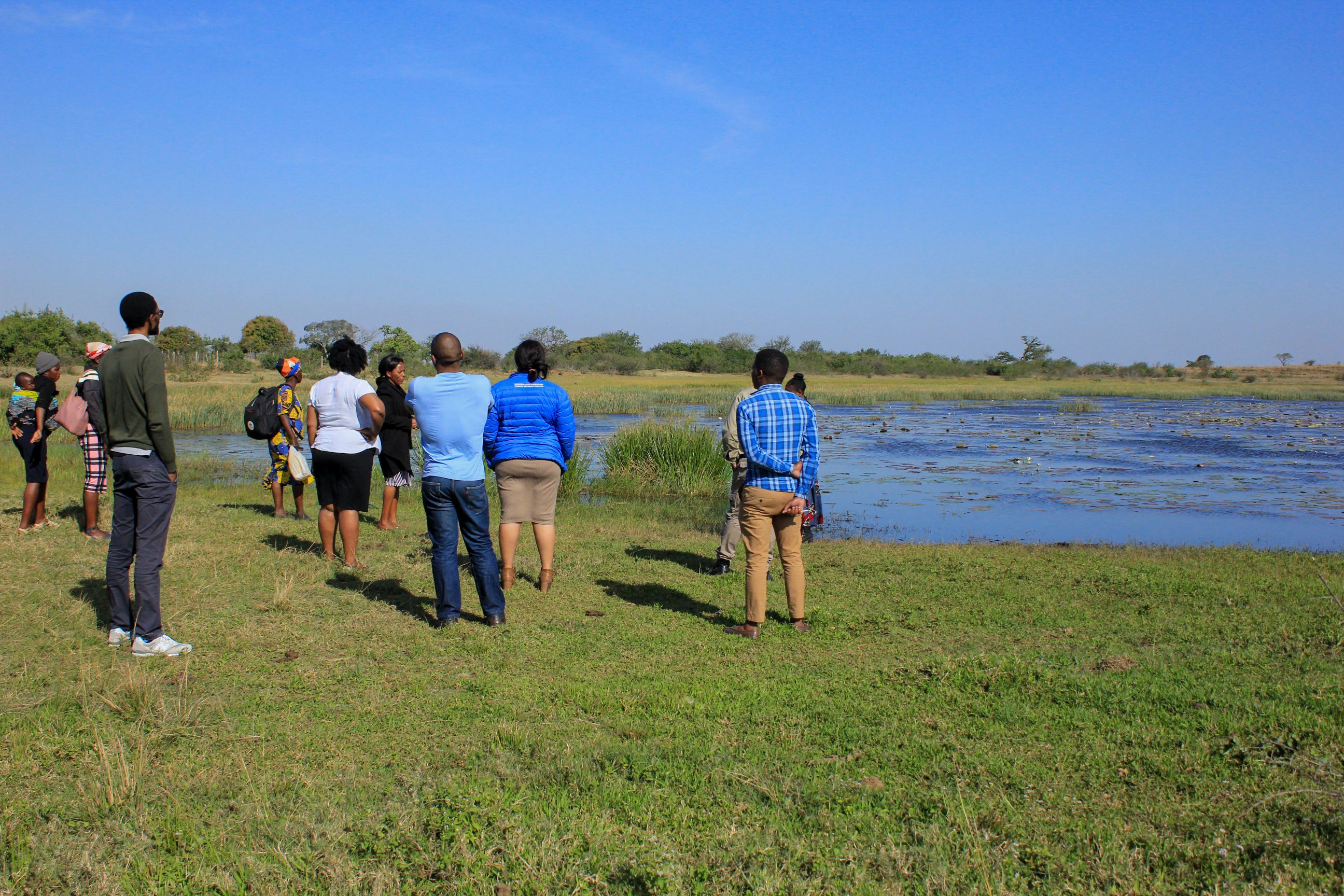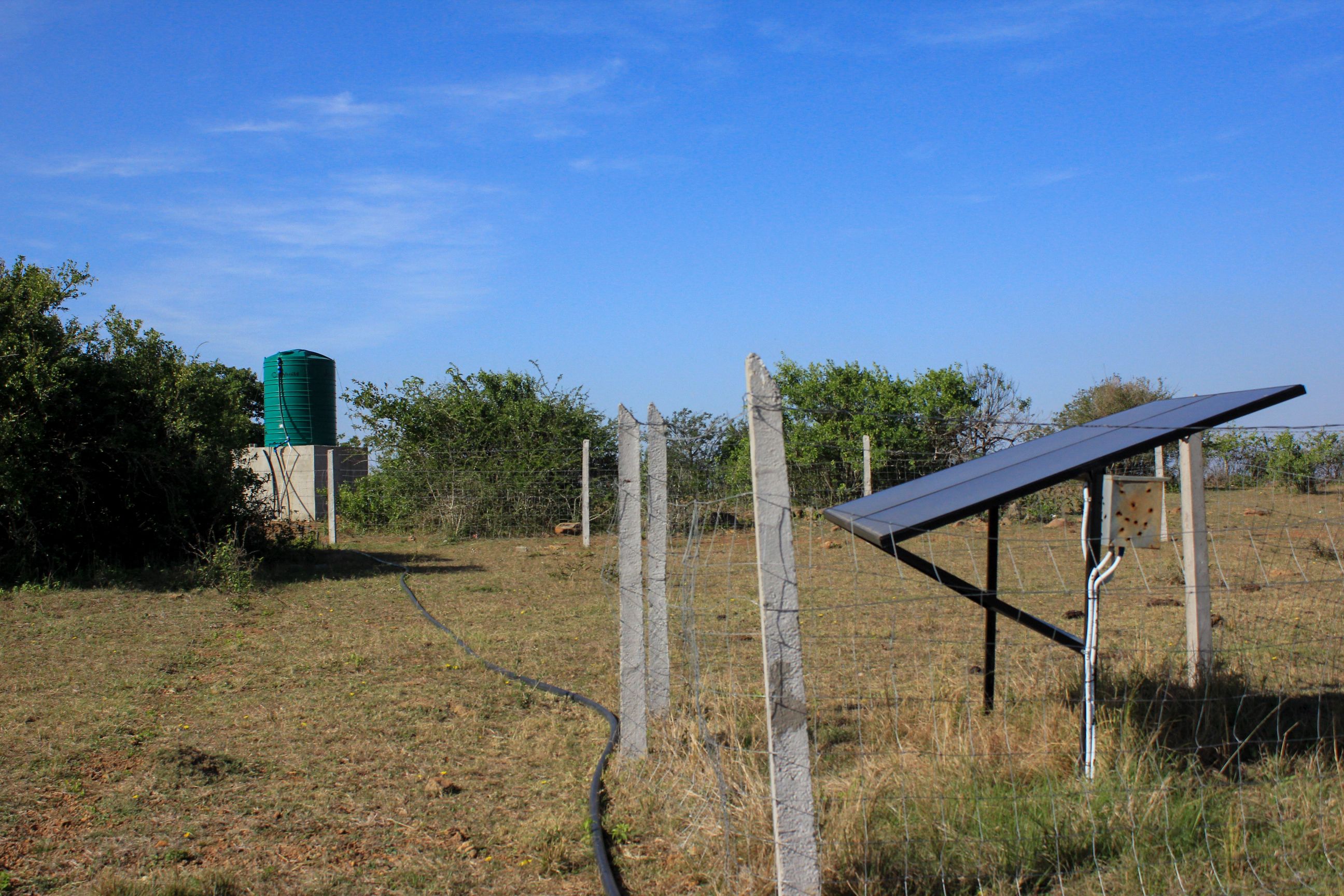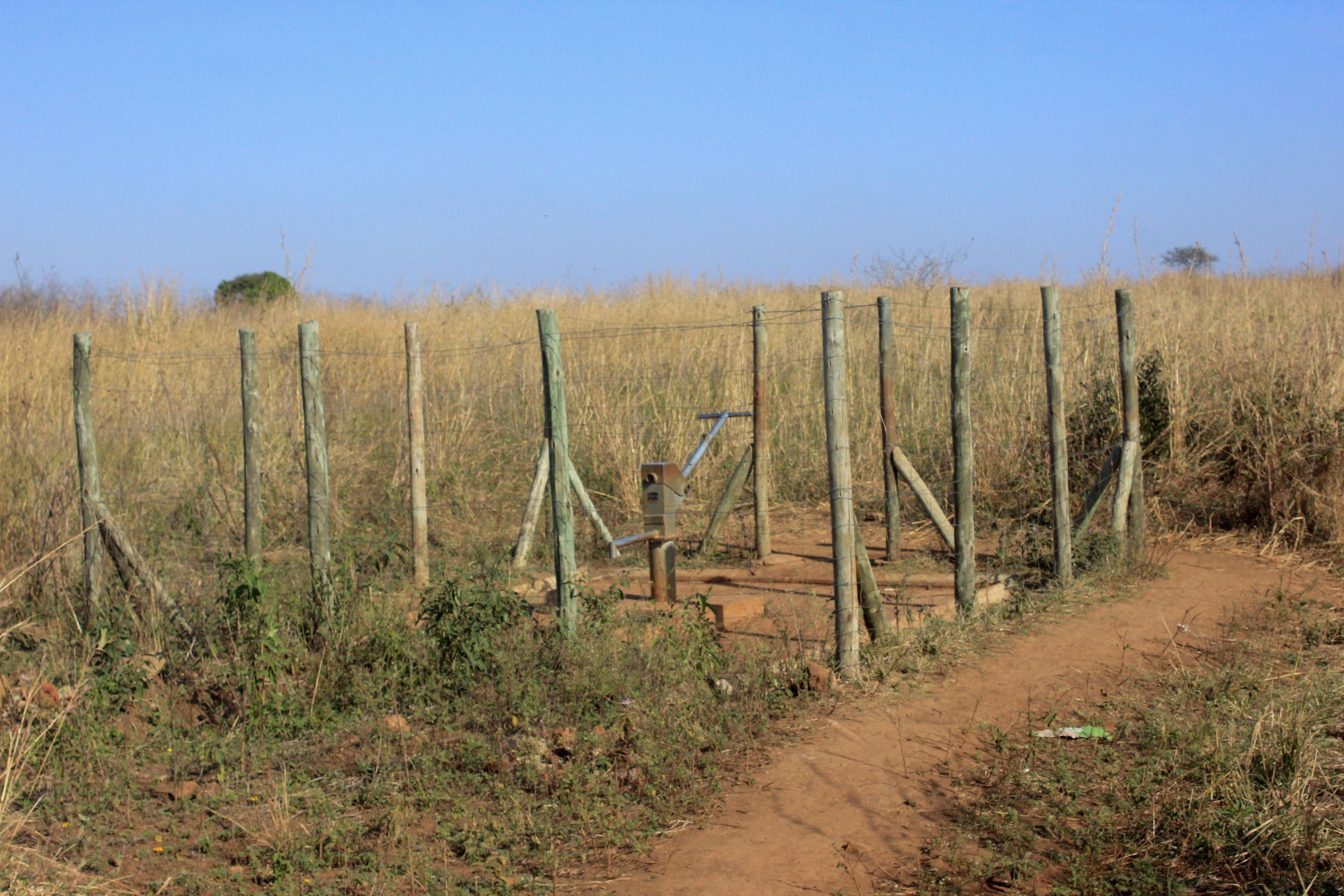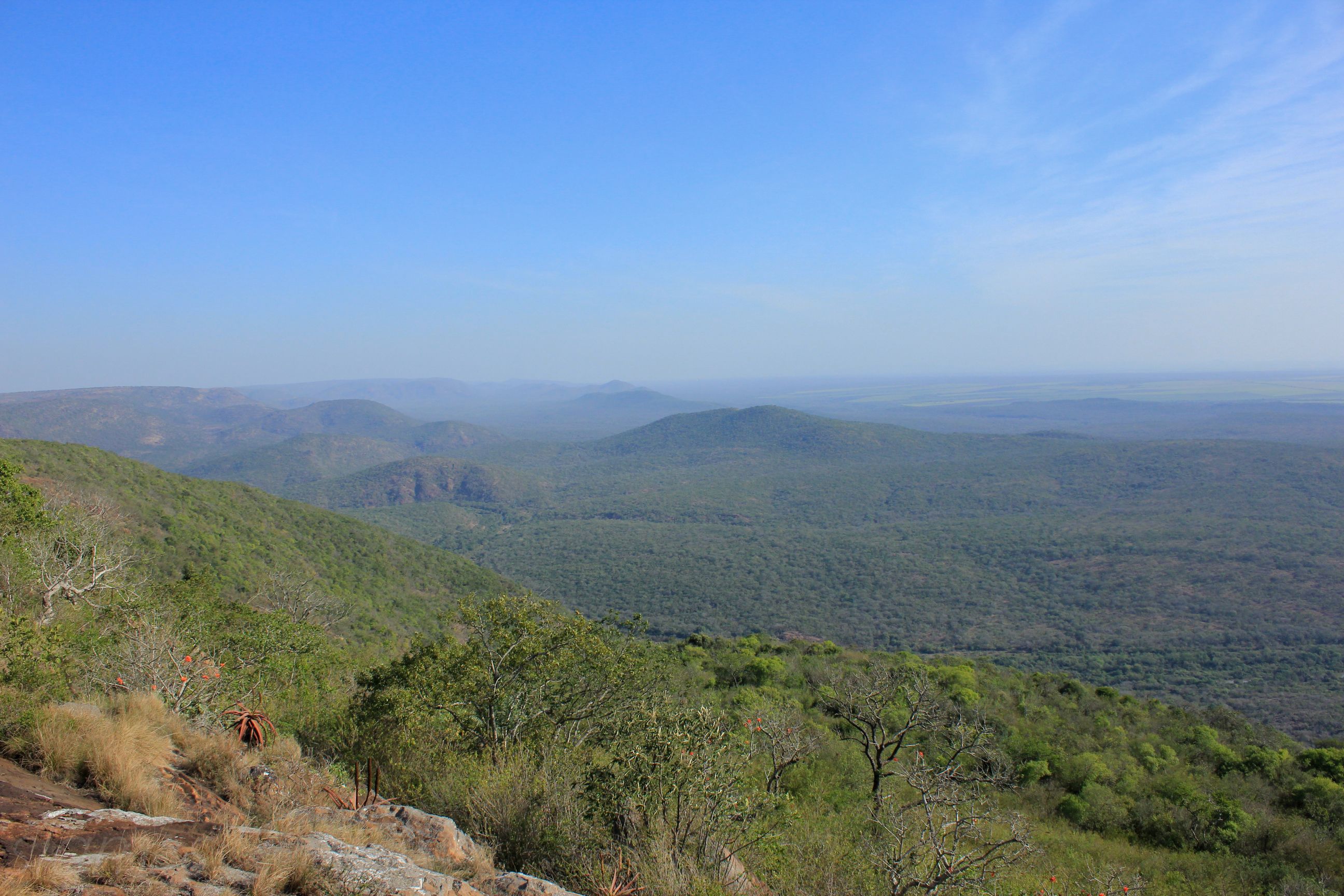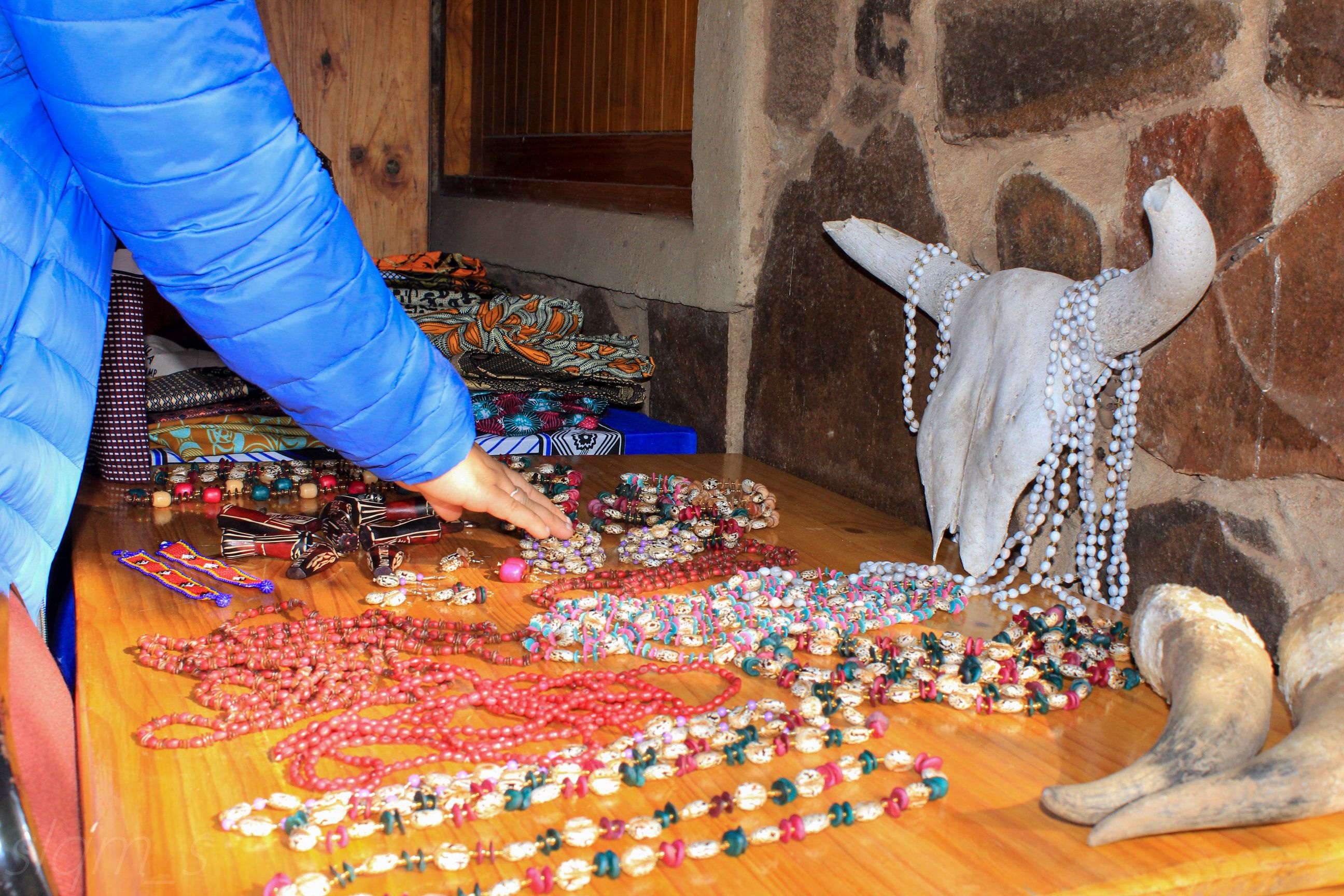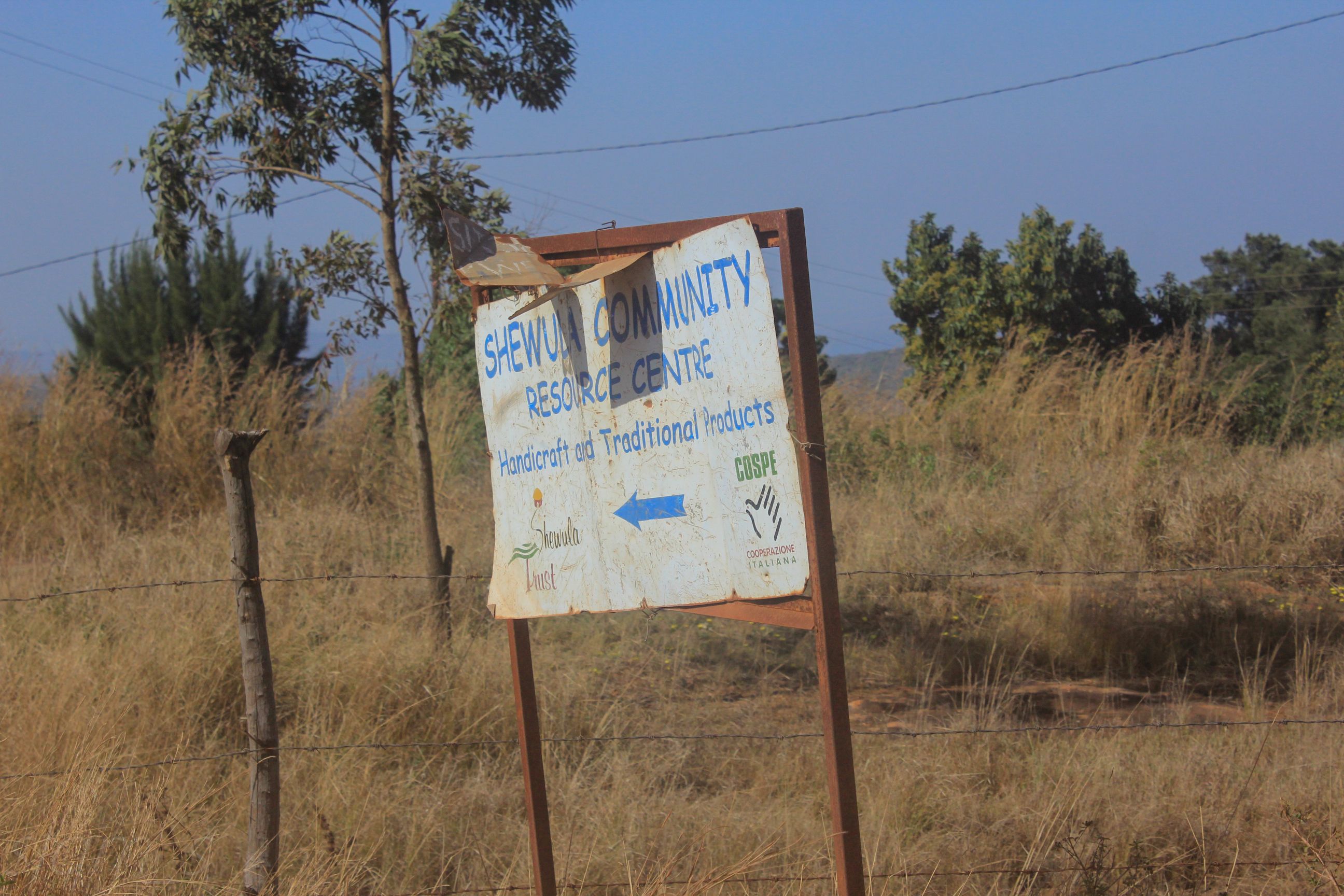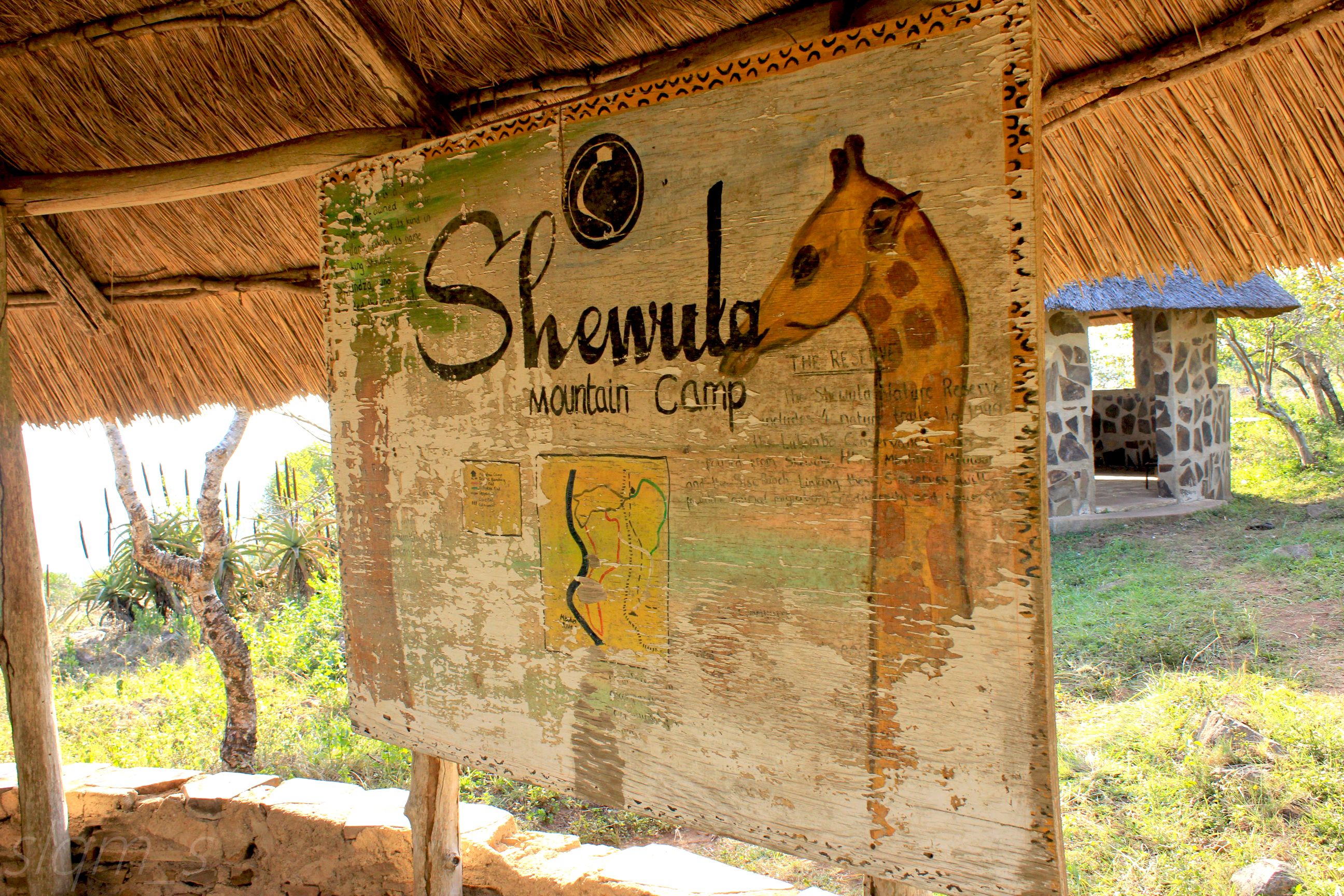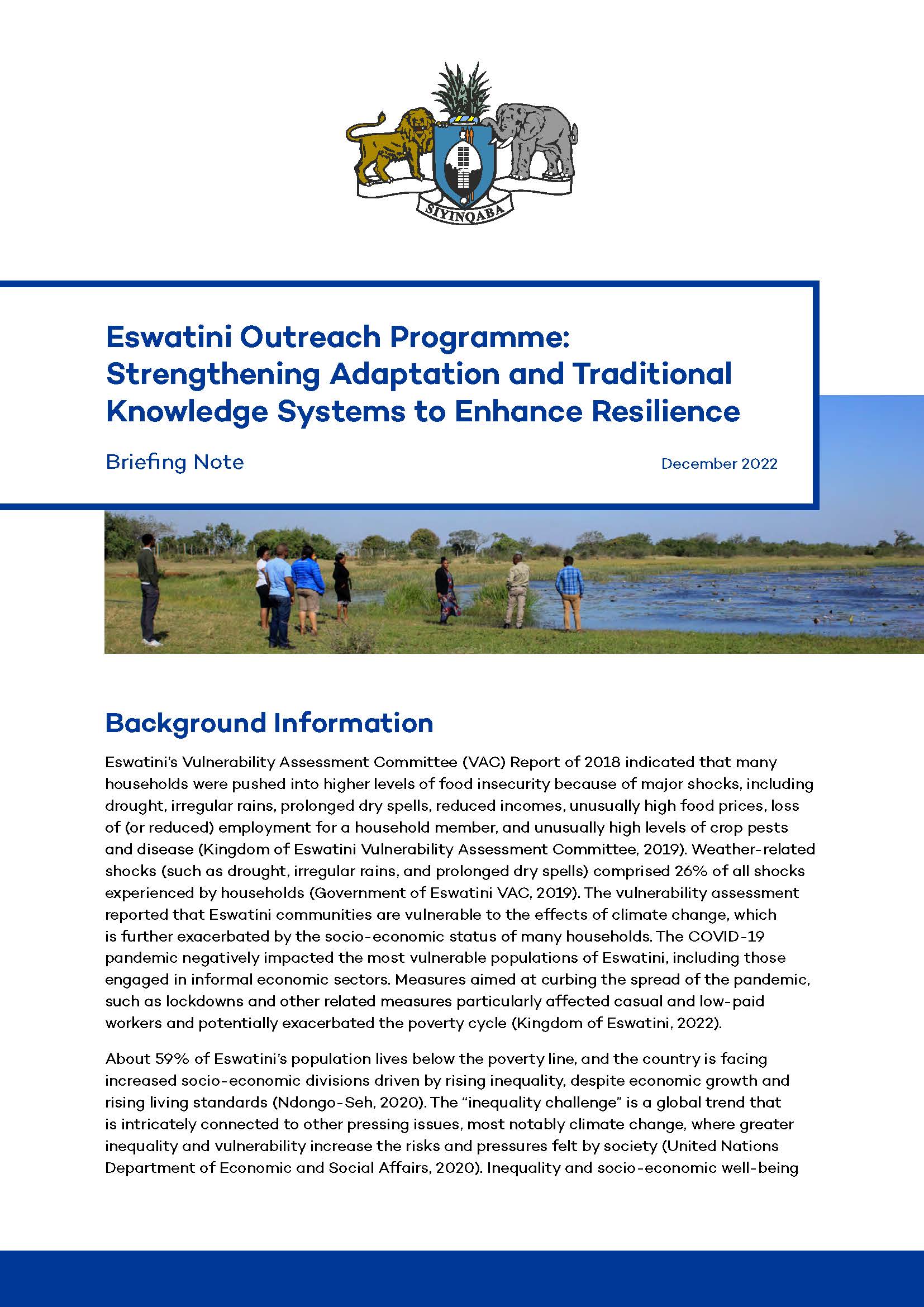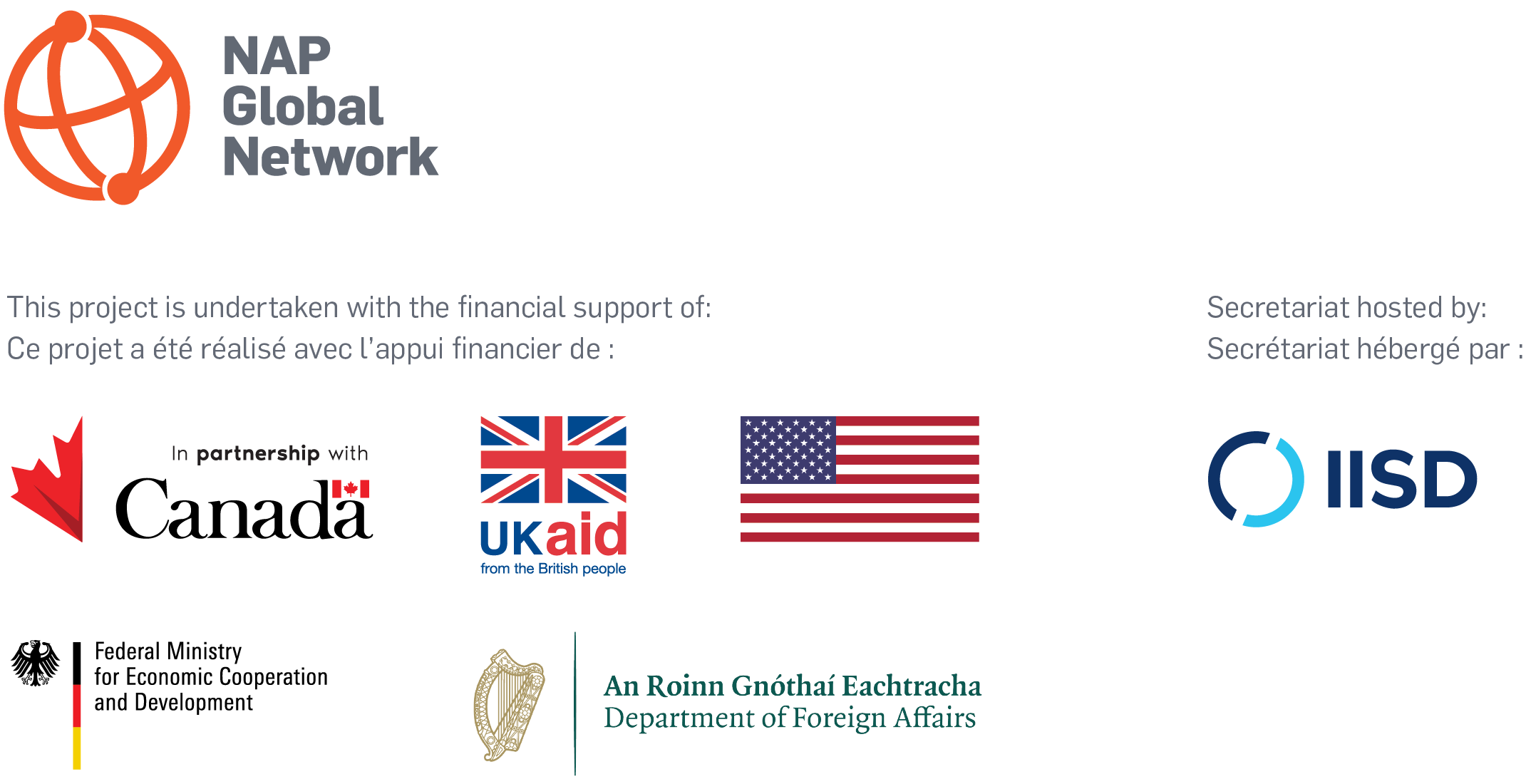Eswatini Outreach Programme
Strengthening Adaptation and Traditional Knowledge Systems to Enhance Resilience
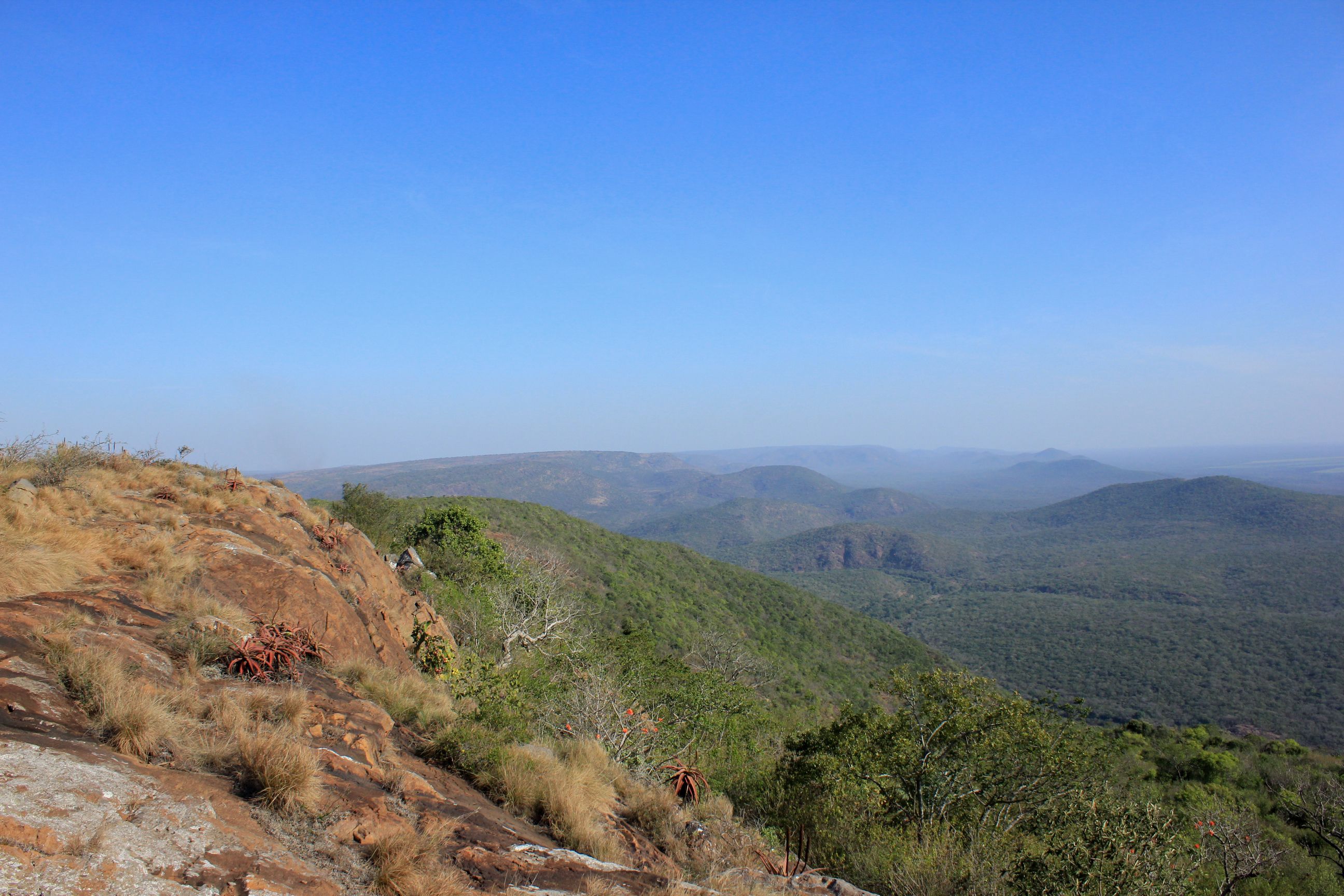
Introduction
Eswatini’s Vulnerability Assessment Committee (VAC) Report of 2018 indicated that many households were pushed into higher levels of food insecurity because of major shocks, including drought, irregular rains, prolonged dry spells, reduced incomes, unusually high food prices, loss of (or reduced) employment for a household member, and unusually high levels of crop pests and disease (Kingdom of Eswatini Vulnerability Assessment Committee, 2019). Weather-related shocks (such as drought, irregular rains, and prolonged dry spells) comprised 26% of all shocks experienced by households (Government of Eswatini VAC, 2019). The vulnerability assessment reported that Eswatini communities are vulnerable to the effects of climate change, which is further exacerbated by the low socio-economic status of many households.
In this regard, the Government of Eswatini recognized the need for engagement on climate change to assist communities in building their adaptive capacity and adopting more adaptation actions that can help to improve their livelihoods. The Ministry of Tourism and Environmental Affairs, with support from the National Adaptation Plan (NAP) Global Network hosted by the International Institute for Sustainable Development, implemented a climate change outreach programme to raise awareness on adaptation and collect information from local communities and at the grassroots level on Traditional and Indigenous Knowledge on adaptation. The outreach programme used the NAP process as a vehicle to reach communities: it built on processes to revise the Nationally Determined Contribution (NDC) and develop the initial Adaptation Communication, both of which were completed in 2021 (Kingdom of Eswatini, 2021a, 2021b).
Climate Change Adaptation Outreach Programme
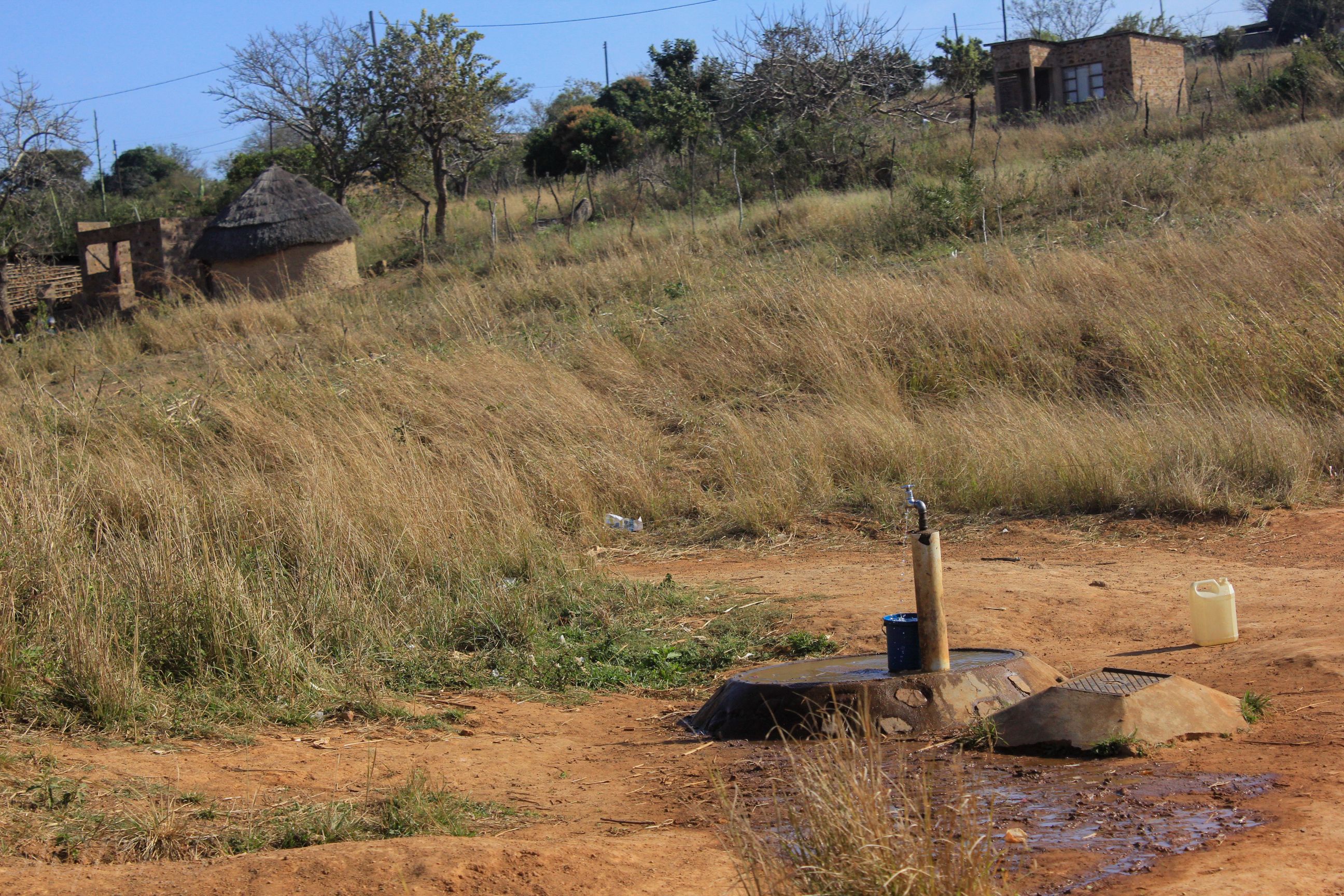
A task team of nine members was set up to provide support and guide the outreach programme. These members have been engaged in several projects on climate change and adaptation, and they were instrumental in the development of the country’s NDC. The task team members are experts in the five sectors prioritized in the NDC for adaptation action: water, ecosystems, biodiversity, health, infrastructure, and agriculture.
Members of the task team.
Members of the task team.
Public Awareness

Public awareness workshops were conducted by the task team members in each of the four administrative regions of Eswatini: the Hhohho Region, comprising 25.3% of the country’s population, the Shiselweni Region (15%), the Manzini Region (39.4%), and the Lubombo Region (20.3%) (World Bank, 2019). The workshops centred on raising awareness of climate change and its impacts, and how communities can promote climate adaptation actions aligned with the country’s goals on sustainable development, poverty eradication, and enhanced adaptive capacity.
The administrative regions of Eswatini with location of outreach communities indicated by darkened areas.
The administrative regions of Eswatini with location of outreach communities indicated by darkened areas.
Dr. Samkele Tfwala listening attentively to community submissions during the consultative meeting in the Shiselweni Region.
Dr. Samkele Tfwala listening attentively to community submissions during the consultative meeting in the Shiselweni Region.
Ms. Cebile Dlamini emphasising a point during the consultative meeting in the Shiselweni Region.
Ms. Cebile Dlamini emphasising a point during the consultative meeting in the Shiselweni Region.
Dr. Wisdom Dlamini making a presentation on climate change and risks to the Shewula community.
Dr. Wisdom Dlamini making a presentation on climate change and risks to the Shewula community.
Mr. Sipho Matsebula presenting on climate change, ecosystems, and biodiversity to the kaKhoza community.
Mr. Sipho Matsebula presenting on climate change, ecosystems, and biodiversity to the kaKhoza community.
Ms Takhona Dlamini presenting on climate change and the water sector to the KaKhoza community.
Ms Takhona Dlamini presenting on climate change and the water sector to the KaKhoza community.
Ms Khetsiwe Khumalo taking notes during the consultative meeting between the task team and KaKhoza community.
Ms Khetsiwe Khumalo taking notes during the consultative meeting between the task team and KaKhoza community.
Minky Groenewald making a point during the consultative meeting with communities in the Hhohho Region
Minky Groenewald making a point during the consultative meeting with communities in the Hhohho Region
Dr. Gugu Sibandze presenting on climate change, health, and traditional knowledge at the Hhohho Region consultation.
Dr. Gugu Sibandze presenting on climate change, health, and traditional knowledge at the Hhohho Region consultation.
Dr. Sizwe Mabaso addressing stakeholders during the consultative meeting in the Hhohho Region.
Dr. Sizwe Mabaso addressing stakeholders during the consultative meeting in the Hhohho Region.
Stakeholder Mapping and Engagement
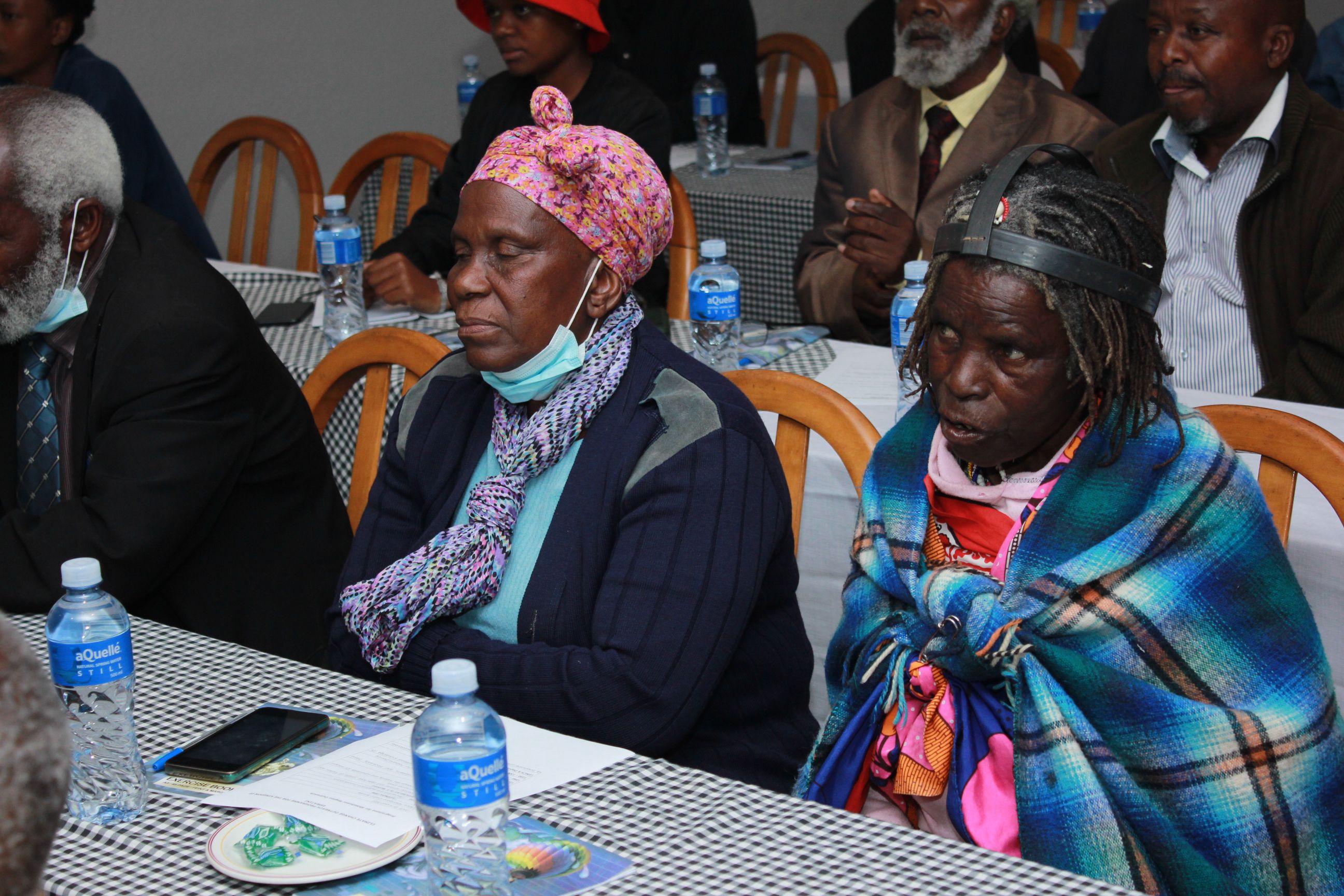
To ensure equal representation and participation in the outreach programme, criteria were proposed to guide the selection of the participants. Five people were selected from each of the 10 vulnerable communities in the Hhohho and Shiselweni regions identified in the VAC report. The 50 participants from each region included five community members from each of the following groups: Umsingisi wekutimilela (senior citizen); traditional authority (such as Bandlancane, community development committee); Inyanga (traditional healer); Lutsango (women); and youth.
Stakeholders during the community engagement in the Hhohho Region.
Stakeholders during the community engagement in the Hhohho Region.
Members of the task team during the stakeholder engagement in the Shiselweni Region.
Members of the task team during the stakeholder engagement in the Shiselweni Region.
Community members during the stakeholder engagement in the Hhohho Region.
Community members during the stakeholder engagement in the Hhohho Region.
The task team with community members during the consultation meeting in the Hhohho Region.
The task team with community members during the consultation meeting in the Hhohho Region.
Collection of Traditional and Indigenous Knowledge
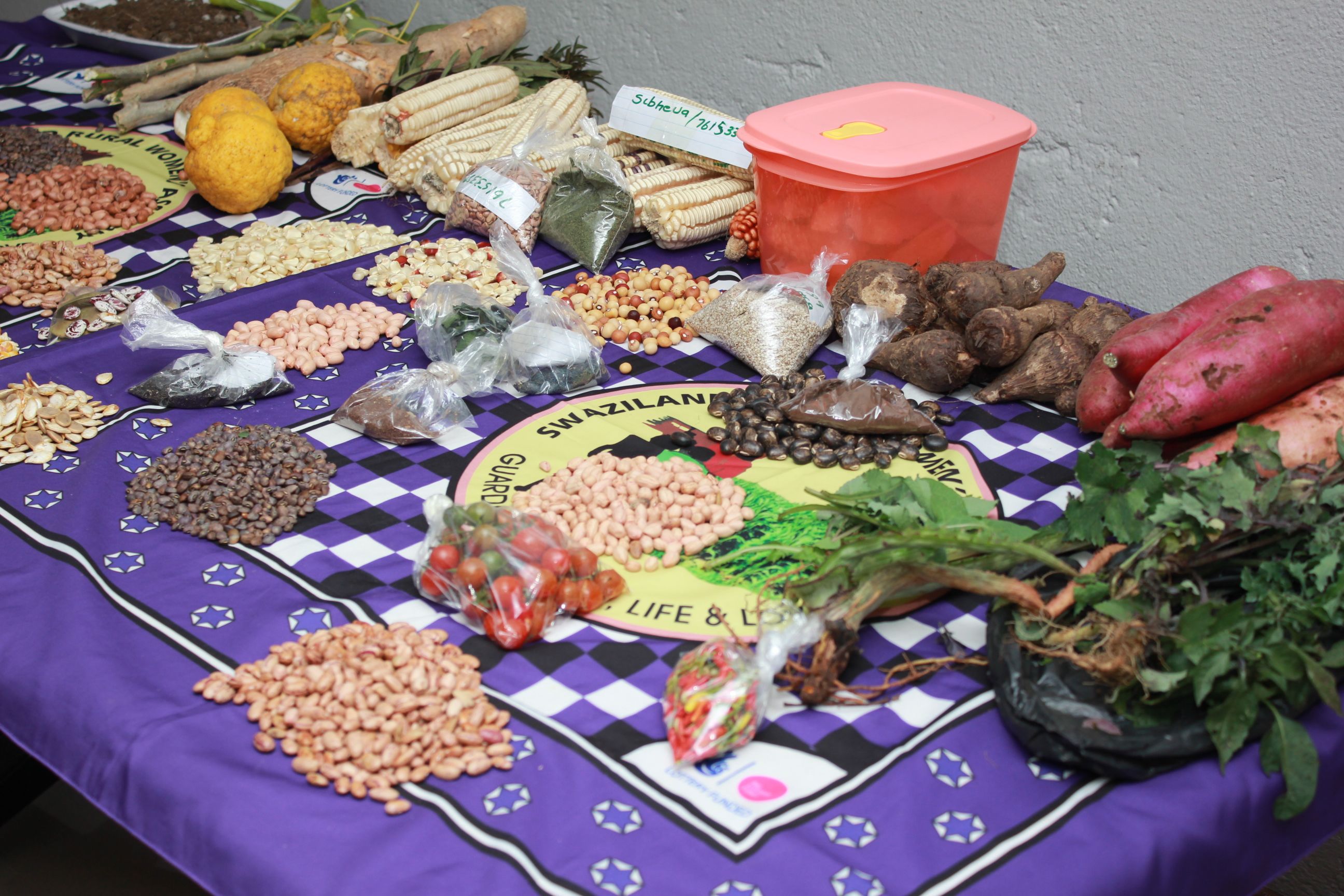
The people of Eswatini have always used Traditional Knowledge as part of their everyday lives in sectors like agriculture and health, and the workshops in the Hhohho and Shiselweni regions provided an opportunity to document and collect information on Traditional and Indigenous Knowledge related to climate change used by local communities. Acknowledging the importance of preserving Traditional and Indigenous Knowledge and its cultural significance in the country, the outreach sessions provided an opportunity to collect information about Traditional Knowledge systems on adaptation, such as traditional early warning systems used by communities.
Case Studies

To understand the impacts of climate change on the urban and rural poor in Eswatini, two mini case studies were conducted under the outreach programme. One was conducted in a peri-urban community in the Manzini Region, while the other was conducted in the rural community of Shewula in the Lubombo Region.
Case Study 1
KaKhoza (peri-urban) community, Manzini Region
Poverty reduction strategies and adaptation programmes are often concentrated in rural areas and tend to overlook peri-urban areas due to their proximity to economic hubs. However, the literature points to high incidences of poverty and food insecurity among households in urban and peri-urban areas (see, for example, Aboulnaga et al., 2019, and Kumar, 2021). As such, KaKhoza (Mhobodleni), which is one of the largest informal settlements in the Manzini Region, was identified as an appropriate region for a case study examining climate impacts on the peri-urban class.
KaKhoza (Mhobodleni) is characterized by substandard Indigenous housing; limited access to roads; limited water, sanitation, and hygiene; inferior infrastructure; and overcrowding. The community has not received any adaptation interventions because of its location in a peri-urban area, even though residents are highly susceptible to urban poverty and the effects of climate change.
A water source at KaKhoza.
A water source at KaKhoza.
Waste dumped on the roadside at KaKhoza.
Waste dumped on the roadside at KaKhoza.
Waste dumped next to a highway.
Waste dumped next to a highway.
Roofing supported by concrete blocks at KaKhoza.
Roofing supported by concrete blocks at KaKhoza.
Temporary fencing made of corrugated iron sheets.
Temporary fencing made of corrugated iron sheets.
Waste dumped in a small stream.
Waste dumped in a small stream.
Building of roads across a wetland.
Building of roads across a wetland.
Child-headed household.
Child-headed household.
Inside a household headed by a widow living with seven children.
Inside a household headed by a widow living with seven children.
Community expressing their feelings by writing on a culvert, 'Please stop digging our area.'
Community expressing their feelings by writing on a culvert, 'Please stop digging our area.'
Case Study 2
Shewula Community, Lubombo Region
This case study focused on the Shewula community in the Lubombo Region, which has implemented adaptation actions. These actions have improved the community’s livelihoods and adaptive capacity while also strengthening their knowledge of climate change and resilience.
Task team with Shewula community members.
Task team with Shewula community members.
Entrance to Shewula Mountain Camp, a community-based ecotourism project.
Entrance to Shewula Mountain Camp, a community-based ecotourism project.
Houses built from local material and stones.
Houses built from local material and stones.
Fencing made from local material and stones.
Fencing made from local material and stones.
The task team at the protected and managed Mangwenya water pan.
The task team at the protected and managed Mangwenya water pan.
Mangwenya water pan protection and management site.
Mangwenya water pan protection and management site.
Mangwenya water pan protection and management site.
Mangwenya water pan protection and management site.
A non-functional solar panel and water tank.
A non-functional solar panel and water tank.
Hand pump borehole.
Hand pump borehole.
Shewula Mountain Camp makes us of local material.
Shewula Mountain Camp makes us of local material.
A semi-traditional hut at Shewula Mountain Camp.
A semi-traditional hut at Shewula Mountain Camp.
Huts at Shewula Mountain Camp.
Huts at Shewula Mountain Camp.
View of the Mbuluzi Valley from Shewula Mountain Camp.
View of the Mbuluzi Valley from Shewula Mountain Camp.
Handicraft work produced by the Shewula community.
Handicraft work produced by the Shewula community.
Directions for Shewula community resource centre.
Directions for Shewula community resource centre.
Shewula mountain camp.
Shewula mountain camp.
Key Findings
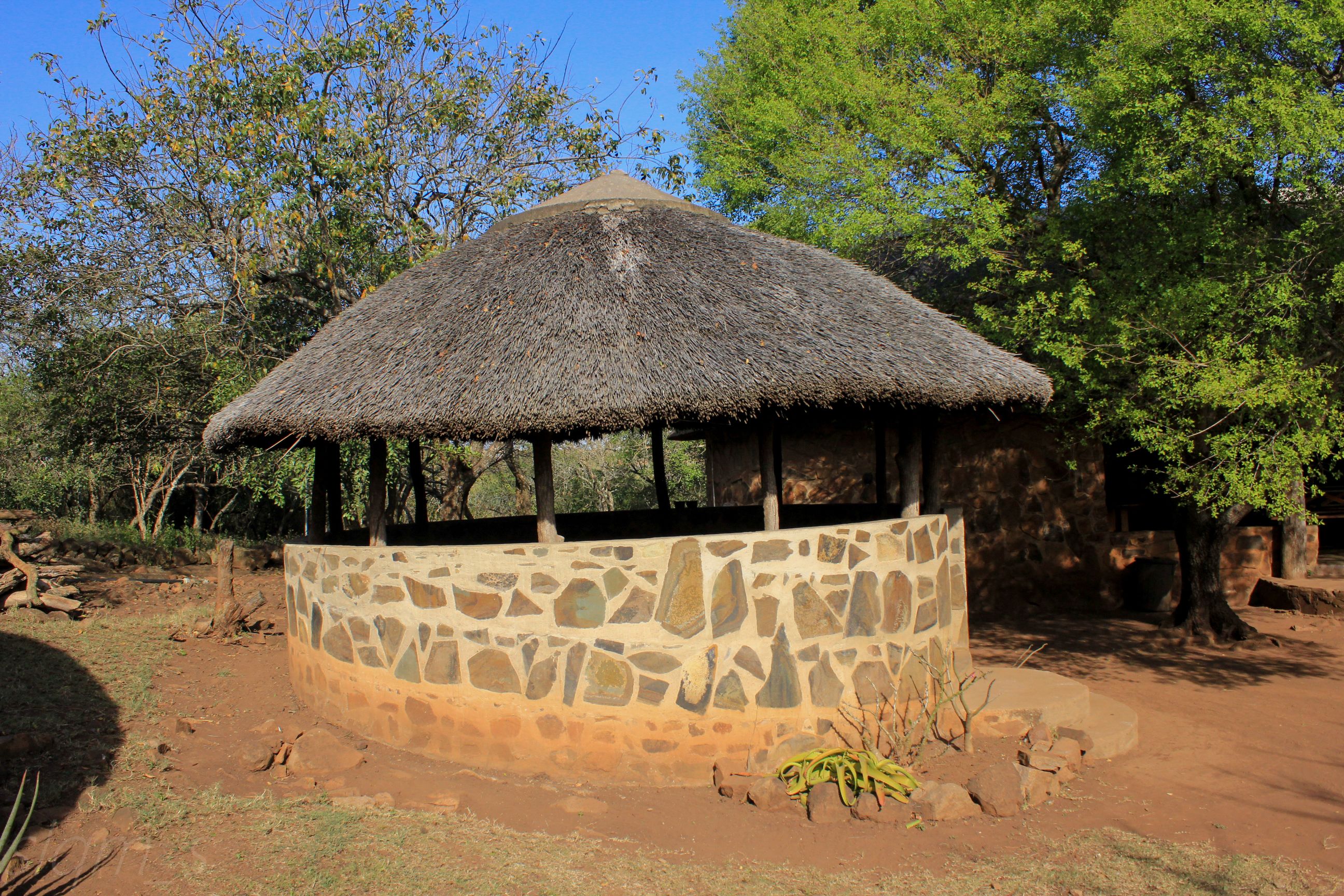
Climate Change Vulnerability
Traditional knowledge systems
Coordination and Governance
Recommendations
References
Aboulnaga, M. M., Elwan, A. F., & Elsharouny, M. R. (2019). Climate change impacts on urban areas and infrastructure. In M. M. Aboulnaga, A. F. Elwan, & M. R. Elsharouny (Eds.), Urban climate change adaptation in developing countries: Policies, projects, and scenarios (pp. 49–75). Springer International Publishing. https://doi.org/10.1007/978-3-030-05405-2_3
Kingdom of Eswatini. (2021a). Initial adaptation communication to the United Nations Framework Convention on Climate Change. Ministry of Tourism and Environmental Affairs. https://napglobalnetwork.org/resource/the-kingdom-of-eswatinis-initial-adaptation-communication-to-the-unfccc/
Kingdom of Eswatini. (2021b). Update of the nationally determined contributions. Ministry of Tourism and Environmental Affairs. https://unfccc.int/documents/497962
Kingdom of Eswatini Vulnerability Assessment Committee. (2019). Annual vulnerability assessment & analysis report. Deputy Prime Minister's Office. https://www.ipcinfo.org/fileadmin/user_upload/ipcinfo/docs/Eswatini_VAC_Annual_Assessment_Report2018.pdf
Kumar, P. (2021). Climate change and cities: Challenges ahead [specialty grand challenge article]. Frontiers in Sustainable Cities, 3. https://doi.org/10.3389/frsc.2021.645613
World Bank. (2019). Eswatini water supply and sanitation access project. World Bank. http://documents.worldbank.org/curated/en/504581569527150555/Eswatini-Water-Supply-and-Sanitation-Access-Project
Read more in the briefing note “Eswatini Outreach Programme: Strengthening Adaptation and Traditional Knowledge Systems to Enhance Resilience.”
Click on the image to read the briefing note.
Click on the image to read the briefing note.
The climate change outreach programme in Eswatini is supported by the NAP Global Network Secretariat and the International Institute for Sustainable Development (IISD), via the generous financial support of the United States Government’s Department of State.
